VMC-only flying
First adventures, encounters with weather
First adventures, encounters with weather
Local 3 Feb 07
Today I'm not going to learn anything formally or be tested; I'm flying for the first time on my own purely for fun so it's time to get the assembled toys out.
I have a nice camera and a Garmin moving-map GPS unit so I'm going to take them for an outing to the coast.
I don't need an Instructor, so I go to my own timetable, no rushing, plan the route properly, pre-flight my aircraft and go ("have the aircraft back by 2pm please"). Fuel up, ask for a circuit and a touch 'n go from the tower, do a nice gentle circuit, a "low 'n slow" landing (see, I can do nice landings!), take off again and head out East for some fun. Fail to raise Benson approach (it is a Saturday, after all) so inform Brize of my intentions and swoop down on my unsuspecting village out of a cold blue sky.

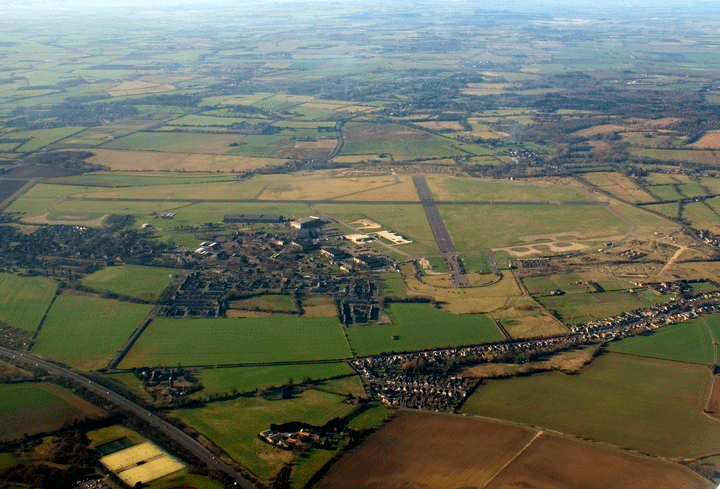 Do a couple of low, tight circuits over my house but no one even notices (we do get beaten up regularly by some fully aerobatic fixed-wing lunatic and Benson's helicopters, so I suppose I shouldn't be surprised) and I head off for Oxford and a more sensible height.
Do a couple of low, tight circuits over my house but no one even notices (we do get beaten up regularly by some fully aerobatic fixed-wing lunatic and Benson's helicopters, so I suppose I shouldn't be surprised) and I head off for Oxford and a more sensible height.
Abingdon is Active and I don't want bits of motor-glider embedded in my wings so I won't buzz my Mother's house today. Instead I turn South and start my plog over Abingdon Bridge.
By half way to Newbury I can see the sea in the distance; it's amazing the distance one can see even at 3,000ft. I can see other aircraft, a hot air balloon way below me and the airliners above. I change Frequencies to Farnborough Radar who are, as advertised, very helpful, and trundle South with the GPS on the dashboard confirming my track and my transponder ensuring I am identifiable to Farnborough.
Within 20 minutes I'm over the South Downs and Farnborough Radar is trying to hand me off to Shoreham as I'm dropping off their radar. I opt to stay on frequency as I'm just looping round and coming back, release their squawk and 5 minutes later I'm over the Channel beyond Havant.
The visibility is fantastic: I can see for 100 miles in each direction. As I turn West and descend I can see motor-gliders and boats far below. It's worth all the last 6 month's hassle to be here, now, doing this.
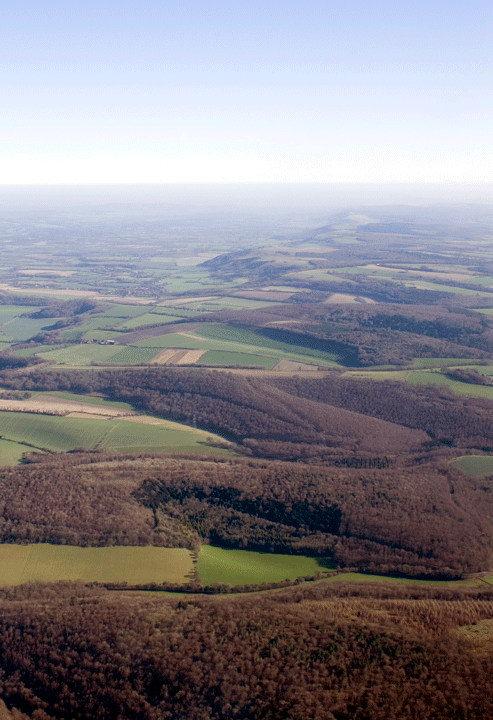
Turn North over Portsmouth at 1,000ft, take some pictures (I am going to have to work out a better way, as taking them through dirty perspex is hopeless) and gently climb over the hills back to my original track. Sign in with Farnborough, squawk and head North once more.
Watch a 727 with the fastest-talking American pilot I've ever heard take off from Farnborough (oo er, he's coming this way.....), cross over a very congested Kingsclere mast (warnings from Farnborough, and I can see at least 8 planes) and back over Newbury.
Thank Farnborough and change frequency to Brize Radar over Newbury racecourse, head North avoiding the turbulence over Didcot power station, then change to Oxford Approach and begin to descend for an overhead join.
 A non-radio microlite is heading East over Oxford and we eyeball each other, both wary of the differing speeds. A wonderful old obviously ex-RAF ("over...") buffer flying an Enstrom 480 is trying to land at Oxford without having obtained permission first, and silent mirth is obvious from everybody else on the frequency as he negotiates with the tower (eventually they do let him land).
A non-radio microlite is heading East over Oxford and we eyeball each other, both wary of the differing speeds. A wonderful old obviously ex-RAF ("over...") buffer flying an Enstrom 480 is trying to land at Oxford without having obtained permission first, and silent mirth is obvious from everybody else on the frequency as he negotiates with the tower (eventually they do let him land).
A neat overhead join and slightly rushed descent to circuit height, call downwind, do the checks, turn Base leg and then Final, call Final (when I can eventually get a word in edgeways) and low 'n slow into the flare, plop it neatly on to the centreline and clean up, clear the Active and taxy in. Very low-stress.
Dump the GPS tracks and pictures on to the home computer, crack a beer and celebrate my first Day Out.
Local 18 Feb 07
The cloudbase is too low at 1300ft for my planned Westbound solo foray so instead we'll see if we can do a little Post-Graduate landing study, and get these squared away once and for all before I start taking on passengers.
The cloudbase is just high enough for some circuits if we brush the underside of the clouds. Interestingly, we are almost the only aircraft flying this morning: does no one fly in February?
It's quite hazy by the time we get to 1300ft so I elect not to go the whole 1500ft official circuit height; whizz round the circuit, do a couple of OK-ish landings, and we start to analyse why both myself and my Skills test examiner are concerned.
I can fly approaches all day and every day: in gusts, downdraughts, crosswinds, rain and haze, and always arrive at double-decker bus height over the numbers ready to chop the power; it's then the trouble begins.
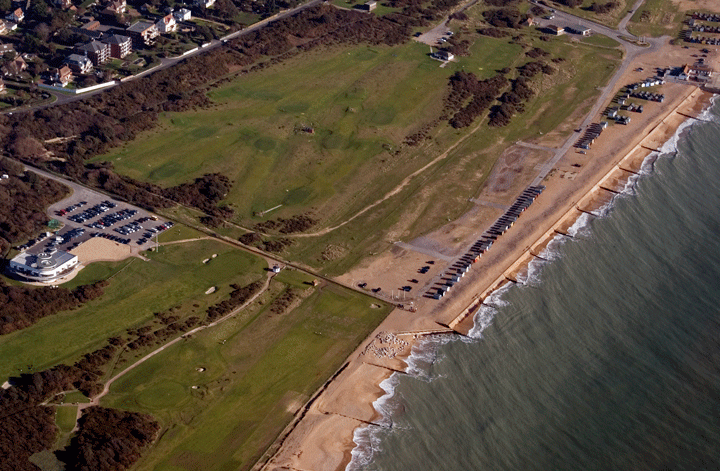
First we work out that I'm not finishing my round out above the runway but actually on the runway, hence the inconsistency (it's hard to judge the exact end of the round out with any precision). So I change my round out to end 3 feet above the runway instead.
What nobody has told me all this time (or I haven't managed to understand) is that at the end of the round out you are not aiming for a nose-high attitude as I thought but an attempt to fly level along the runway at 3 feet; as the speed decays (because the power is off) the aircraft will float downwards; gentle back pressure on the stick will arrest that and the main wheels will arrive on the runway very gently indeed.
It's as close to the fabled Eureka landing moment as I've come, and we perform some beautifully smooth and consistent landings.
We also work out that once you've sorted that out you can pull your approach aiming point back from the numbers towards the start of the runway to reduce your landing run (as far back as the threshold if necessary), because the earliest you can ever touch the runway becomes on the numbers.
Realistically, if you aim for level flight 3 feet or so above the numbers you'll always float onwards a bit so there is no danger of you ever landing short.
After an hour of this with varying degrees of flap I'm a lot more consistent and my Instructor reckons I just now need 1,000 landings to really get good. Phew!
Local 9 Mar 07
Time to take Mother out today, but despite the sun it's really windy: if we use the main runway it's beyond the crosswind limit of the PA-28. However, as the traffic is light (see, no one flies in the Winter!) and the wind is directly across the runway we get to use the other runway: 29.
I've been itching to use this for ages but they don't use it very often because it's only 760m long, they can't get jets down on it, and they don't let Students on it!
Louise thinks it's too gusty to fly so has cancelled everyone. Tumbleweed is blowing through the office.....
I bully her in to allowing me to take her up for a check circuit because althought the wind is gusty it's blowing straight down the runway.
Take off is "interesting": it does it's best to turn us over at 100ft but then it smooths out and we do a neat circuit around the airfield, minding Blenheim Palace, before turning on to Final over the A34. The runway looks short from here, but I bimble down the approach, weather the gusts, mind the downdraught over the wood half a mile before the threshold, plonk it neatly onto the numbers and brake hard, using about half the available runway. Request to backtrack 29 and we go back in. She is surprised a) that I landed it at all, b) that I got anywhere near the numbers and c) that I'm still keen to take my 75 year old Mother out.
Actually Mother is pretty keen as well (apparently it looked OK from the ground), so reluctantly Louise admits that it is my Licence, I pop Mother in to the right-hand seat, strap her in and off we go. I warn her it's going to be rough taking off, which it is for a bit, then it gets better and I can show her Oxford from the air which, in the afternoon sunshine, looks fantastic.
Being a weekday, Abingdon is inactive, so we pootle over at 1,000ft AGL and I show her the family home from a new angle: always wanted to do that!
Back over Abingdon, then up to Harwell and back over Didcot and Oxford before requesting a straight in Join for 29, turning Final over the A34. Half way down a PA-31 nips in on Right Base ("Oy, Bugger off!"); a quick calculation: he's not going to clear in time, so it's "Golf Golf Juliet, going round" at 500ft, round the windy circuit and back on to Final.

Plenty of power over the wood, then chop it over the airfield boundary.
Can I repeat my short field trick? Yup, mains on the numbers, pull up even shorter and backtrack.
All very painless, and Mother has the biggest smile on her face. Asked afterwards how bumpy she thought it was, she reckoned about the same as a commercial airliner, so I must have done something right.
Oh, and she'd like to come again, please.....
Passenger
The wettest winter I can remember is finally turning in to Spring and we're all off to Duxford for a day out. I'm flying as passenger/extra pair of eyes in the Cherokee Six; it's a good chance to hone my aerial photography skills and mentally fly the journey without the pressure of having to actually be responsible.......
It's very windy and a touch hazy, and of the 6 aircraft who leave (2 hours late, I've never seen such shambolic flight planning in my life...) one immediately returns to base after a circuit claiming that the viz isn't good enough, and the Cessna (piloted by two IMC students who should have know better) gets lost half way there and has to ask Luton Radar for a position fix.
Our pilot cruises straight there without a hitch, which is comforting, and the wind is straight down the huge runway. We have lunch and go around the museum. Museums are always sad places, you can't help thinking that we were once a greater nation than we are now. The other concern is the increasing complexity of military aircraft: how are Duxford going to keep a Tornado flying in 50 years?
 After a windy afternoon in the sun we whizz back in 20 minutes or so and our super-laconic/super-efficient pilot then proceeds to perform the most extraordinary approach that I am convinced busts the Brize Zone. We drift half way to Charlbury before he notices and Final is conducted at 60° to the Centreline.
After a windy afternoon in the sun we whizz back in 20 minutes or so and our super-laconic/super-efficient pilot then proceeds to perform the most extraordinary approach that I am convinced busts the Brize Zone. We drift half way to Charlbury before he notices and Final is conducted at 60° to the Centreline.
Me, I would have gone around; we're not back on line until nearly at the flare.
But it's easy to back-seat fly, we land OK.
At Last: it's Official. I'm a pilot and can bore everyone with it
The fabled pooh brown cheap plastic folder has appeared from the CAA: I am now officially licensed to fly anywhere in Europe with nothing more than a check ride and, one presumes, in America with little more.
One of the PPL students just a couple of months ahead of me has already exercised that freedom to fly from Spain to Ibiza in a rented Cessna, and indeed has bought his own aeroplane, with retractable undercarriage and variable-pitch propellor. How do I keep up?
I remember, before I earned my driving license, the constant hassle of travelling by train or, more commonly in my case, by bus: the uncertainty and endless time-wasting of standing at the bus stop (am I at the right stop, are they running today, will it be full, will I have the right money?), being the slowest thing on the road, the frankly peculiar fellow travellers and the uncertainty of your arrival time, plus getting people to pick you up from the bus stop.
All these things led me inexorably to buying my own car; even taking in to account its myriad expenses and frustrations it is worth its weight in gold: if I need to go somewhere I can simply Go. The question is: will the uncertainties of finding an aeroplane available to rent when the weather finally relents sufficiently to allow some flying force me in to buying my own aircraft in the same way?
And the Cost.
It has to be said that despite achieving my PPL in almost exactly 60 hours, which is a great deal less than many, it has not been the cheapest experience. Even my long-suffering wife has questioned the wisdom of flushing money down the loo.....
Not that I see it that way, of course.
GA is expensive in the UK, and has always been a political whipping boy due to political under-representation. We pay more for our petrol than cars do and more than anywhere else in the world; the CAA makes us follow everybody else's rules and adds more of their own at random, leading to ludicrous over-regulation; and it's hard to justify in terms of CO2 generated. But the fun per hour quotient is enormously high.
The private aircraft struggles to be a viable alternative to the car or the commercial airline: too weather and infrastructure-dependant.
The weather I reckon we can do something about by getting instrument and night ratings, and actually airports are surprisingly commonplace.
A perusal of Pooleys Guide, which covers every single airfield in the UK plus a couple of common foreign ones shows that I can land at about 85% of them; some are just too short, being primarily for microlites or gliders; and some, like Heathrow, are unavailable for little aeroplanes.
However, for getting to France I reckon a light aeroplane is a good deal: you can leave in the morning, have lunch anywhere within a large percentage of France, Germany or the low countries and be home for supper relatively easily, which you certainly cannot do any other way.
So would I recommend Kidlington as a place to learn to fly? I've little to compare it with, but it has been a frustrating experience. There has been little ownership of my training programme; it's all been a bit haphazard.
I could definitely have achieved my license faster and done a lot more flying had they been prepared to let me fly more times per day.
A single Instructor for longer periods would have been better: they are more geared up for occasional students than students trying to do it all in one chunk, and they expect you to be able and willing to bend your life around their schedules.
That said, the haphazardness has made me a little-more self-reliant; I have certainly not been spoon-fed. Many things I have had to find out for myself; many procedures I have had to invent for myself.
The lack of GPS training in the PPL syllabus is ridiculous (which is the CAA's fault), but the huge radio overhead of Kidlington and the proximity of the Brize Control Zone have undoubtedly made me a more confident radio operator and I'm not scared of asking ATC for things: they can only say no!
I haven't been able to see further than this moment so I can't really say what I will do now. I yearn to be good enough to go and fly a Fouga Magister jet trainer out of Le Touquet, which I'll bet is a hell of a lot of fun; I'd like to do some aerobatics and maybe get a Rating, and I'd like to do some touring, which is hard to do with a family.
If the kids go to boarding school that would make it more feasible. Ideally I'd like my wife to get the bug then we can go off together and split the flying, but that may be asking too much. So for now I'll take family and friends out and see where things go.
Family flights 3 Mar 07
The weather is windy and there's a chance of rain, everyones' nerves are a-flutter: today's the day Daddy takes the family flying......
I've decided to take them all up individually, to resolve those tricky "who gets to sit in the front" issues.
First of all I'll take up my wife, who is scared of heights. I've promised not to bank the aircraft too much and to keep it smooth.
I sit her in the passenger seat, explain what we are planning and off we go.
We head out over Charlbury and request a Zone Transit from Brize Norton for some photographic work over Bibury: we're not planning to take pictures over Bibury but my Mother-in-law lives just outside the Brize Zone: if we infringe without permission we're in trouble, so it's better to get permission to go in to the Zone, then fly out again to our destination, then if we do re-enter the Zone whilst circling the village it doesn't matter.
Apart from misjudging the initial bearing from Charlbury and ending up a bit too far North (easily rectified with the GPS: lazy man's navigation there....); and flying through some rain, the plan works perfectly, and we make some low passes over my Mother-in-law's house with photos to match.
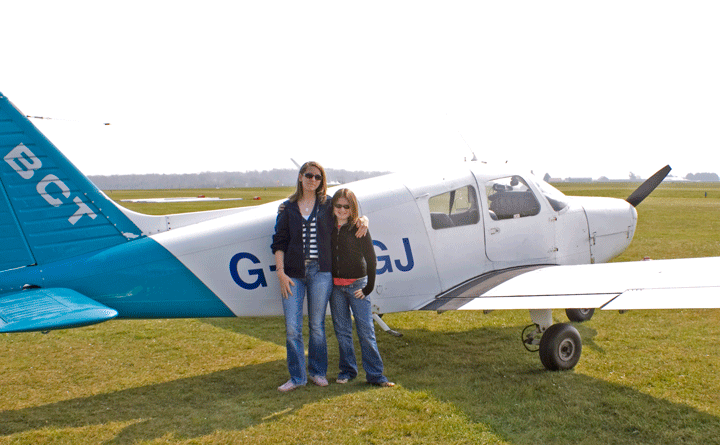 Climbing back out we get the return bearing to Oxford right. The views are spectacular: the sun is out and we can see huge distances. Thank Brize for their help, back in to the circuit for an Overhead Join, a bit of balloon on the landing cured with a burst of power and a nice gentle eventual descent on to the tarmac. The crosswind has calmed down a bit and we taxy back, my nerves subsiding. I've carried a passenger. And she enjoyed it!
Climbing back out we get the return bearing to Oxford right. The views are spectacular: the sun is out and we can see huge distances. Thank Brize for their help, back in to the circuit for an Overhead Join, a bit of balloon on the landing cured with a burst of power and a nice gentle eventual descent on to the tarmac. The crosswind has calmed down a bit and we taxy back, my nerves subsiding. I've carried a passenger. And she enjoyed it!
Swap over to youngest daughter in the passenger seat (with cushion) and take-off again to the Beckley mast and over our house. Benson is asleep so we return to Oxford Approach for a Flight Information Service. We make several passes over the village and she is suitably impressed, so we return to Oxford and show her what her school looks like from the air before heading back to Kidlington.
As I'm not a student any more I'm allowed to do Downwind joins, Crosswind joins, Straight-in Joins, right base joins, so I exercise my right and request a Downwind join (so much easier), line up and perform one of the neatest crosswind landings I've ever done. We taxy back and she's very happy.
Swap over to eldest daughter and repeat the exercise, only now it's getting late and the sun's going down. Coming back to Kidlington we watch a beautiful orange sunset in a virtually cloudless sky before a Downwind join and drama-free landing. She's happy and we're back 5 minutes before the Control Tower goes home and 20 minutes before daylight officially expires.
Flying the C172 pt.1 6 Apr 07
The problems with flying the PA-28s is that a) they are "Student" aircraft and so are very hard to book out for more than 90 minutes at a time and b) they just can't carry 2 adults and 2 children with any more than 2 gallons of fuel on board: by the time you've taxied to the end of the runway you've run out of fuel.....
However, Kidlington have a Cessna 172, a Slingsby Firefly, a Cherokee Six, a Cirrus SR-20 and a Socata TB10 which are much less used and the C172 has a bigger engine and thus should take the whole family at once, so I think it's time to get used to flying them.
The 172 has the reputation of being the most ubiquitous GA single ever; it was manufactured in America and France continuously from 1955 to 1985 and this is a 2001 souped-up model. It's reputed to be easy to land. I need a Check flight, so have a new checklist, a huge cockpit layout poster and a "Flying the Cessna 172" book.
"A" check the aircraft (glad I read the book, there's a few things different here), get in (ooh, 2 doors, luxury!), "Clear Prop", twist the key.
Clunk.
Twiset the key again.
Clunk.
Oh God, I haven't even flown it yet and already I've broken it.
Actually, the starter is malfunctioning. My Instructor takes a large hammer from behind the seat and proceeds to pound the starter housing. After a couple of goes the engine bursts in to life. Phew.....
This is a more powerful beastie and even with a couple of porkers like us aboard it takes off like an express lift. We're at circuit height before we know it so we head off in to the wild blue yonder for stalls and steep turns. Remembering (as this is a high-wing aircraft) to lift the wing I'm about to turn into a bit just in case aircraft lurk there, we stall, steep turn and PFL our way around the North Oxfordshire countryside. He's happy I know what I'm doing, so we Join Overhead back at Oxford and try some circuits.
Landing speed is 65Kt as opposed to the PA-28's 75Kt but unless you want to hold up everyone else in the circuit you fly the Base leg at 75Kt with one stage of flap then turn Final, hit the 2nd stage and slow to 65Kt.
I'm told it floats down the runway but actually once the power is chopped and provided you haven't overcooked the approach, by the time you've finished the flare you're going to be doing about 55Kt and it drops smoothly and progressively on to the tarmac.
I do a couple of less than perfect ones and a good one, and my Instructor reckons I need an hour doing circuits in it and I'll be good to go.
Kemble 7 Apr 07
Easter Saturday, and the forecast is excellent so I'm taking the girls to Kemble for a bacon butty.
I'm up at 6.45 too excited to sleep, doing the plog for a 9.00 start and we're ready to check out the the aircraft at 8.40. Unfortunately the weather has other ideas; the mist refuses to lift. At 10.00 we decide to give it a go, and if it's really bad we'll abandon, fly round the circuit and land.
It is pretty hazy but I can just about get the surface to remain in sight if I stay below 2,000ft, and I know it'll get better, so we get Flight Information Service and head South for Abingdon. The airfield at Abingdon is Active so we skirt the field, turn, start the plog and head West in to the haze.
Apart from a panic when I just cannot get Brize to talk to me (it turns out they've got radio issues), the plog turns out OK: after the 14 minute run we are exactly where we should be. As Brize are u/s and Fairford are only Active when NOTAM'd (and I did check, they're not) we could just blast through but to be on the safe side I blind call Brize and tell them I'm going over the top of the MATZ, and climb to 3,0001ft.
Change frequencies and see if we can get Kemble to hear us. Yup, absolutely fine; they're expecting us and we're on time, with Kemble looming out of the haze a couple of minutes later.
Overhead Join for 08, no other traffic in the circuit, bimble down to the simply massive runway, and of course it's on an up-slope so I misjudge the flare, over-rotate and get a chirp from the stall warner but we're only a foot above the runway so a firm landing but no bounce, then we're looking for the next exit which is about 4 miles away....
Neat Taxy instructions: "follow Taxiway Golf and park outside the restaurant".
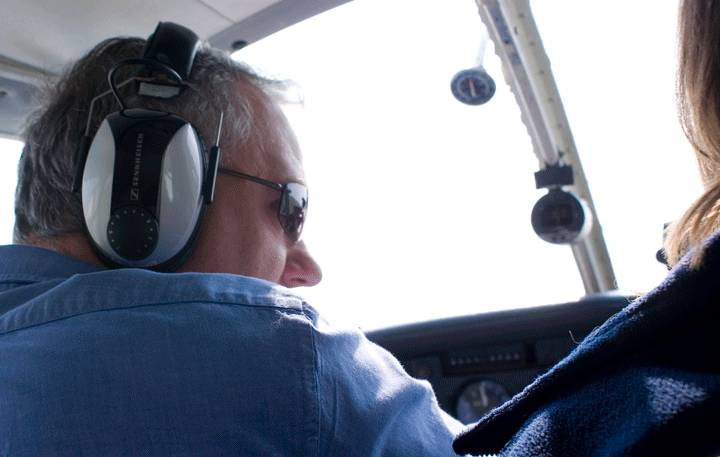 After a bacon sandwich and a relief stop (huh? Outside the gents there's a painting of the aircraft I've just landed!) we saddle up once more and I realise I've committed the Cardinal sin of leaving the key not only in, but switched to both magnetos.
After a bacon sandwich and a relief stop (huh? Outside the gents there's a painting of the aircraft I've just landed!) we saddle up once more and I realise I've committed the Cardinal sin of leaving the key not only in, but switched to both magnetos.
If anyone had swung the prop it could have started. Eeek! That's yet again something I'll never in a million years repeat.
Personal engine stop check list revised to "Keys out... Master Off... Fuel OFF".
Unnerved by that, I crank up the radio and ask for taxy. My brain says that this is not Oxford, there is no ATIS, all I have to say is the QNH. Over an open mike my mouth tells the tower that the request is "with Information......" and then stalls. What actually comes out is "Information...........aarrrgghhhh.....and QNH 1016".
I can imagine the looks in the (busy) Tower.
Yes, I'm from Oxford, OK?
Finally we get clearance to taxy and promptly end up at the taxiway equivalent of Spaghetti junction. The map says one thing, the boards another and the Hold point I am told to use appears to be inside a hangar?
Eventually (after more red-faced banter with the Tower) I am cleared out on to the runway ("get rid of this idiot before he hits someone!") and head for the hills. Left turn outbound to avoid the villages and head North.
The weather is better now, less mist, so I let Lucy fly for a while and we bimble North then East. I'm not going to bother with the defective Brize so we go non-radio for a bit, scare the girls with some steep turns North of Witney then settle down with a nice, comfortable Oxford Overhead Join for 01 and the smoothest landing ever; didn't even feel the wheels touch. Playing with the Cessna is helping my PA-28 landings!
Flying the C172 pt.2: Some days you're just crap 21 Apr 07
I need to get a sign-off to fly the C172 on my own so need to learn how to land it reliably. The main runway is being dug up for widening, so today I also learn how to use a grass runway.
Take-off (very rough) and bimble around the circuit, then it all goes pear-shaped: the Base Leg is shorter than normal as it's a different runway, so I'm in the wrong place and the damned aircraft won't descend at all unless you chop the power right back to Idle as you turn Base; so I come in wide and high, and am fighting the speed and the rudder all the way down. Bloody awful landing; go around and have another go.
The first few landings are dreadful; then slowly it gets better. The Cessna is very sensitive in pitch and the visual cues on the approach are very different to the PA-28, plus the grass runway is confusing me. It's very rough on touchdown and the take-offs feel awful. And I've got the seat too low.
Just when things are beginning to slot in to place and I'm managing not to bounce it every time my Instructor calls the end of the lesson ("1 hour? Already? Bloody hell, he's right too, but it felt more like 10 minutes!") and we trundle in.
We both agree more work is needed so I book another lesson for next weekend.
The Cessna isn't booked out for another hour and a half so Wayne and I decide to go off for a little shared bimble together as it's such a beautiful day. Between us and the aircraft we have 3 working GPS units plus 2 PPLs, both with maps: we are not going to get lost!
We agree he'll fly for a bit then I'll fly for a bit; depart East, buzz my house and head off towards Booker, where the airspace is very busy. We turn for home and retrace our path roughly; following a neat Left Base Join he shows me how the landing should be done which, to be fair, wasn't hugely different to my better efforts.
It's always worth flying with more experienced PPLs; there's always something you can learn. However I go home feeling dreadful: I just can't seem to get the hang of landings......
Flying the C172 pt.3 Persistence pays 29 Apr 07
If there is one piece of advice I'd give to anyone learning to fly, it's "Be Persistent, Don't Give Up". Some days your flying is crap; that's Life.
So we have another go at circuits. Today it's hazy and we can't manage official circuit height without disappearing entirely, but as we're the only aircraft flying nobody will know.

Immediately, it feels better. I'm more used to the grass runway, I'm happier about the more positive control movements and power adjustments required on the approach, I've thought through the flare and the flap positions, I'm happier about the bumpier landings and even manage to consistently land on the mains.
Because the wing is high-lift it floats after the flare, allowing a very gentle hold off and potentially (once I can really get the hang of it) very smooth landings.
After a relaxed hour we amble in: he's happy, so I'm free to go out with just one check circuit. Booked a trip immediately.
Persistence Pays.
Chinnor and West Wycombe with Ali 21 Apr 07
Today the hazy sunshine we've had for weeks has finally been replaced by clouds and the visibility has improved. It's time to take daughter #2 for a proper flying lesson, and I need my monthly PA-28 fix.
Despite having been told that the aircraft are virtually fully-booked all day, we turn up at the airfield and, once again, no one is flying. These are training aircraft and the weather is not good enough for training. But it's good enough for anyone with a PPL......
The cloudbase is said to be 1,800ft and forecast to improve so we decide to go. The main runway is still being rebuilt so we can use either 29 (tarmac but short) or 03 (grass and with a displaced threshold caused by a big ditch making it short). Let's fly off 29 and land on 03, for fun.
Book out, check the aircraft, start up, take off (scary: I'd forgotten how slowly PA-28s accelerate!), get a Flight Information Service and climb to 2,300ft at which point it gets hazy and I run out of licence i.e. sight of the ground.
So we cruise at 2,000ft, heading East and once clear of Oxford daughter #2 flies us all over South Bucks. The horizon is limited but she's got the hang of using the artificial one. We do straight and level and gentle turns: she's pretty good, for 11 !
She takes us back towards Oxford and we request a downwind join for 03. As this will be the first time I have landed a PA-28 on grass I'm a bit nervous but if it all goes pear-shaped we can always go around and divert to 29.
I join, call Downwind, do my checks, bimble round to the Base leg, pull the flaps and get trimmed, turn Final, call Final, bimble down the approach, miss the ditch and plop the mains on one third down the shortened runway, hold the nose off and gently apply the brakes. Just like landing the Cessna. Flying different aircraft does improve your landings.
First visit to Shobdon 20 May 07
Weeks of appalling May wind and rain cause several cancelled flights, but finally relent and we have a Perfect Flying Day. Far too good to waste, so I manage to blag the Cessna 172 at very short notice for a whole morning.
I can't sleep beyond 6.00 (too excited) so before the airfield opens I'm plogged, weathered, NOTAM'd (the low-level wind forecast is CALM to 5,000ft; I've never seen that before...), ATIS'd, PPR'd for Shobdon and ready to fly.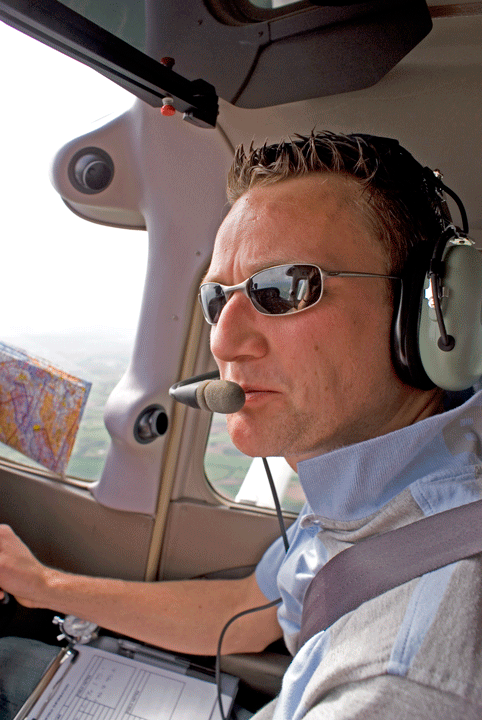
I need to satisfy the school that I can land the Cessna one more time without putting it through the hedge (you'd be fussy about this sort of thing if you were renting someone £105,000-worth of aircraft), so I pop Wayne in the right seat, we get some fuel and bounce off the grass for a circuit. Nice approach (he reckons it's a bit low, but I'm not convinced), flare and hold off, hold off..... bump and trundle, flaps away, boot it, right rudder, at 500ft request a left turn outbound and we're off to Shobdon.
I'm reading Nigel Everett's Beyond the PPL in which he recommends "mutual flying" i.e. flying with other PPLs, and he's right: it's great fun flying with someone else, especially Wayne who's a bundle of fun and (hugely more important) not that much better a pilot than me. We agree I'll fly outbound and do the landing and take off at Shobdon; he'll fly us back and land at Oxford.
We follow my plog (with GPS, NDB, a VOR and two sets of PPL eyes as backup), change to a Brize Radar FIS and soon realise we're 10° off track, so correct by (10*1.5)=15° which brings us neatly back on track by the halfway mark. Dead reckoning does work and is always worth practising for the day the GPS dies and the navaids don't work.
Within 35 uneventful minutes we are on Shobdon Radio, 5 miles out ready for an overhead join and 5 minutes beyond that a half-decent landing, backtrack and short taxy gets us shut down, booked in and in the café where the prettiest girl I have seen in a very long time serves us bacon sandwiches and coffee.
Back out to the plane, negotiate a taxy up the grass as a Police helicopter is refuelling on the taxiway, then we're off back up the runway we landed on as as they've switched circuit direction while we've been stuffing our faces.
Transfer control to Wayne in the right seat and settle back to navigate, be an extra pair of eyes and ears and take some pictures.
The clouds are thickening so we decide to go upstairs: I've not done this before (like 1,001 other fun things I have ahead of me now I'm a PPL....) and we are treated at 5,500ft to fluffy white clouds below us and the odd fun bit at our height. It does seem weird flying through what, to all intents and purposes, seems like solid ground. Useful IMC practise and great fun.
Half way back we change to Brize and listen to some unfortunate who has indavertently busted the Brize Zone. Oops.....
Sooner than we would have wished we need to descend for Oxford and once below the clouds two pairs of PPL eyes plus the GPS cross-check and ensure we really are where we think we are. Left Base join for the grass runway and Wayne flies a steeper approach angle than I would, but his landing is certainly no smoother than mine! Ten minutes late but a great flight, and very low stress. I like Mutual flying.
And so, for the first time, I am Free to rent a PA-28 or aCessna 172 to go where I want, when I want. It's taken damn near a year but I'm there.
First C172 solo 17 Jun 07
Weather has cancelled the last 2 weekends flying: a flying club flyout to Le Touquet cancelled by serious rain, and a very carefully weight-and-balance-planned family trip to the Crab and Lobster in Bembridge on the Isle of Wight blown out by haze (although we very nearly went).
And today doesn't look like it's going to be any better: showers, gusty wind and loads of cloud appear the moment I set off for the airfield. Bang head on windscreen in time to "Must. Get. Instrument. Rating".
A clubhouse full of glum looking prospective pilots watch as showers scud across the field. The ATIS delivers hail and thunderstorm warnings. All the aircraft are on the ground (except a Hurricane doing low passes: lurve that Merlin noise...), never a good sign. As I watch, it gets worse: typical.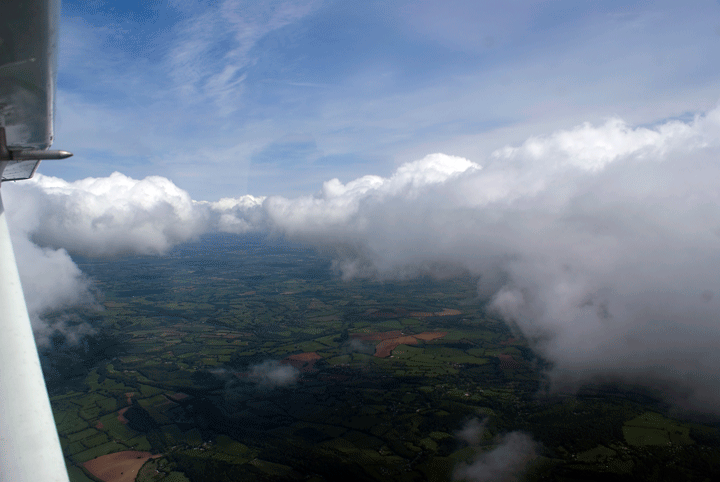
But after a couple of hours and some coffee, the worst blows through and it gets good enough for some cloud-bashing, if not any serious cross-country stuff. My first solo in the Cessna.
Actually, it's hugely satisfying that no one bats an eyelid when I do finally decide to go: sign the tech log, fax a booking form to the tower (Purpose of flight: "Fun") and stride out to the aircraft.
We're still on the grass runway (although promised a shiny new runway next weekend) so lumpy-bumpy take-off (although I'm getting used to it now), the 172 rockets away with just 1 PoB, get a Flight Information Service from Kidlington and I'm free to bash the clouds. Despite what many Americans think, fun flying is not entirely banished in the UK!
Ever since I was little I've always been fascinated by clouds: my favourite Kate Bush track is the 12" Meteorological remix of Big Sky. So I've always dreamed of being able to climb up and around and down the clouds, go through those little holes between them, go under them and get wet, go through bits of them (rough and disorientating, but I have my Artificial Horizon and 4,500ft of height to play with), go fast, go slow, explore the clouds, and learn more about really flying.
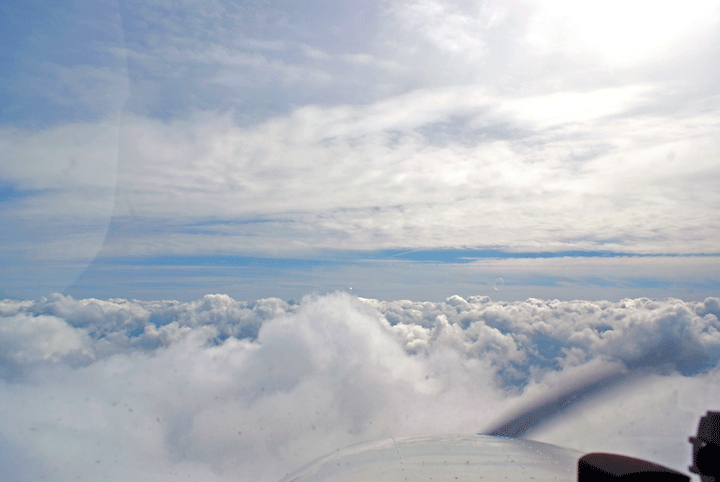 Not the "do it by numbers" stuff you need to navigate and land, but the control forces as you pull the aircraft round for the next cloud hole, the sounds the engine and airframe make as you dive and climb at different speeds, the difference in feel between coordinated and uncoordinated turns, how it feels as you trade speed for height and vice-versa. I barely look at the speeds and heights, concentrating on feel and sound alone.
Not the "do it by numbers" stuff you need to navigate and land, but the control forces as you pull the aircraft round for the next cloud hole, the sounds the engine and airframe make as you dive and climb at different speeds, the difference in feel between coordinated and uncoordinated turns, how it feels as you trade speed for height and vice-versa. I barely look at the speeds and heights, concentrating on feel and sound alone.
This is Flying.
So, to break the mood (because these happy moments are exactly when this can happen), I close the throttle.
PFL time. Land it from here.
Nose forward, trim for 75 Knots (four hard jerks backwards on the trim wheel), orient yourself in relation to wind and turn downwind. Search for the solution:
Carburettor heat: NOT FITTED (it's a fuel-injected engine)
Fuel: ON
Fuel gauges read: LOADS
Mags: BOTH
Fuel pressure: GOOD
Try the fuel pump anyway: NOPE
So Practice Mayday and look for a field. Oops, entirely forgot to Squawk 7700.
Good field over there. Nope, far too far away? Remember, this is the super-slippery Cessna, not the aerodynamics-of-a-brick-hanging-off-a-Lycoming PA-28. Round in a spiral, hugely overshoot said field and my second choice (could have flapped it in to the second field, though), but now a field on the south slope of Brill hill appears.
Furrows in the right direction? Check
Power lines? None. Check
Uphill? Check (actually, it's very uphill; with flap I reckon our ground roll would be short)
Long enough? Check
Stare it in the eye as the altimeter unwinds. 1/3 of the way along the field is right there, I could get it in from here, so as we pass 300ft I smoothly bring in the power and we climb out avoiding a couple of houses.
Mental note: must try more of these.
Back up in to the clouds for more play, and far too soon I need to be heading home, so back round Oxford and ask to join Downwind for 21. Smoothly back in to the circuit at the right height; now let's see if we can land it OK.
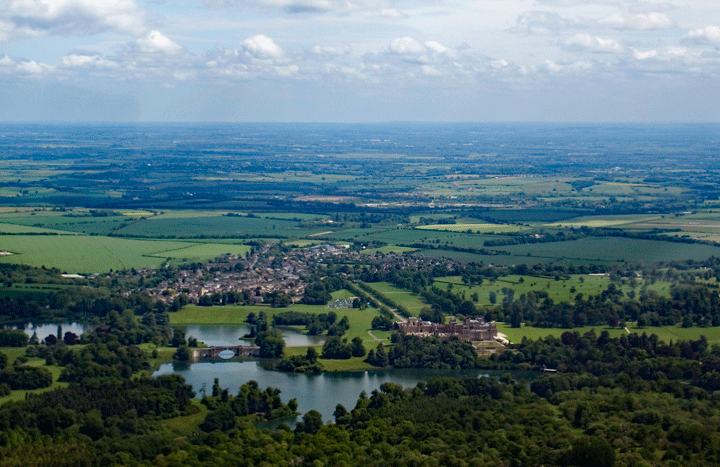
A bit lower than normal as we roll out on Final, but it's OK: this is an Instructor-free zone. Drop the last section of flaps, up the power to compensate, nail the speed on 65 Knots and aim at the threshold. Bit of a bounce on landing: a quick burst of power to stabilise then let it down gently; no drama, plenty of runway here. Brakes, amazingly short ground roll, ask for and get a Backtrack, and we're shutting down.
The rest of the day dissolves in to hail and thunderstorms until the occluded front finally pushes through at 5.30pm: I had the Best of the day.
Grown-up cross-country: Exmoor and Wales 7 Jul 07
My Mother-in-Law and her husband have a long-standing request to go flying: today 3 weeks of non-stop unflyable rain and wind relents and the mythical Perfect Flying Saturday for once coincides with me having booked the Cessna for the whole day. We're going out.......
Map on the table, folded out to "all of Southern England". "We can go anywhere..." (a very bold claim, as it turns out).

Simon asks for a photo session over their house near Bibury, the Severn bridges, Exmoor, then across the Bristol Channel to the Gower Peninsula, over the Brecon Beacons, back up the Bristol Channel and home.
Gulp.
That's 240 Nautical miles plus orbits; say 260 miles. I wouldn't dream of doing it in a PA-28 at 90Kt but in the Cessna at 120Kt, it's feasible, just way more than I've ever done before.
But I am a grown-up pilot now and should be able to do this sort of stuff.
So, OK.
Draw on the map, fill the plog, plot the route in the GPS for backup, check radio frequencies and alternates. Check out the aircraft (all looks OK, full tanks), NOTAMs OK, W&B OK, load the passengers, safety briefing and start up. We get to use the big new taxiways and the big new runway today. Big crosswind too: 15Kt; on the aircraft limit. Might use 29 on return if it fails to improve.
Take-off is uneventful except that with 3 up it doesn't quite leap in to the air as I am used to. Then overhead Blenheim I notice one of the Dzus fasteners holding the engine cowling down working loose. If it comes out at 110Kt it could shatter the windscreen, plus the air will then get under the cowling and we could lose the whole cowling. Throttle back, tell the passengers calmly that we're going to turn back, land, shut down and find a screwdriver.
Tell Tower, who ask if we need to declare an Emergency; no, just a crosswind join please, and the wind. 270@13 Kts: OK, should be fine. Tower overreacts and by the time we call Final there are 2 Fire Engines on the taxiway that chase us down the runway. What?
Shut down, Wayne arrives with crosshead screwdriver and fixes it in 30 seconds. Drama over.

|
Start up, get Tower to change our booking out time, take off and this time I am determined to roll out of Charlbury on the correct heading as I keep getting this wrong.
But what's this? I can't get the radio to tune in to Brize Radar - the frequency simply isn't available. Come on, I know this radio works properly. Whassup?
It takes 5 minutes of prodding before I realise I have to pull the tuning knob to get the intermediate frequencies. Never had to do that before. Weird.
Find their house and do some orbits for pictures, very carefully remaining outside the Brize zone, then head West. As we cross the ridge before the River Severn the sky fills with gliders: some are at our height and quite close. Keep a good look out and then we're over the river and the visibility is just amazing: the clouds clear and the Severn Bridges shine in the sun, waiting for us to orbit over them for photos while we sort out the radio.

Bristol, Bristol Filton and Cardiff all lay claim to the airspace South of here and I need to ensure that I am talking to the right one and doing what they ask before we proceed. It takes several orbits before we get all the "paperwork" done, then we proceed South "not above 2,000ft", so I fly at 1,950ft and accurately for once.
We pass Bristol, Avonmouth and Clevedon before we are released from all the controlled airspace. The clouds clear and we can see Exmoor, which looks rugged and uninhabited, especially the steep wooded cliffs leading down to the sea. And as we are over the sea it is beautifully smooth, like we're not moving at all.
We follow the coast low-level South then West to Ilfracombe watching the character changing from the long sands of Weston Super Mare to the rugged cliffs of North Devon. This is worth seeing.
At Ilfracombe we climb to 6,000ft and head out North over the Bristol Channel towards the Gower Peninsula that we can see in the distance. I'm nervous about flying over water so fly as high as possible to be able to glide to land in the event of an engine failure. I also experiment with leaning the engine and discover the sweet spot where the engine runs best and the fuel flow is minimised. The clouds disappear and it's like being in an airliner.
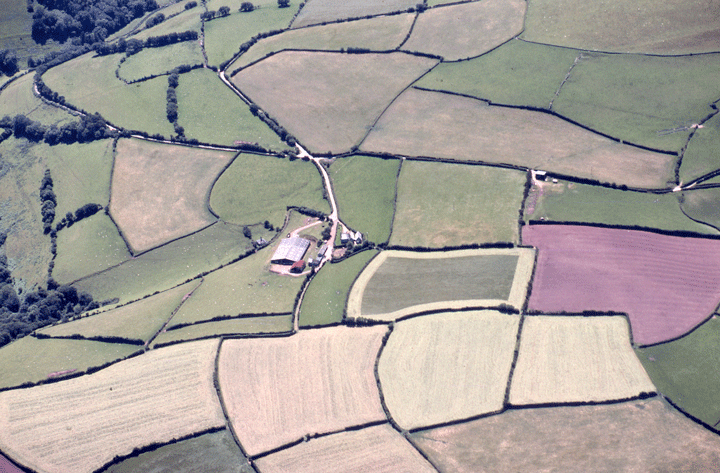
|
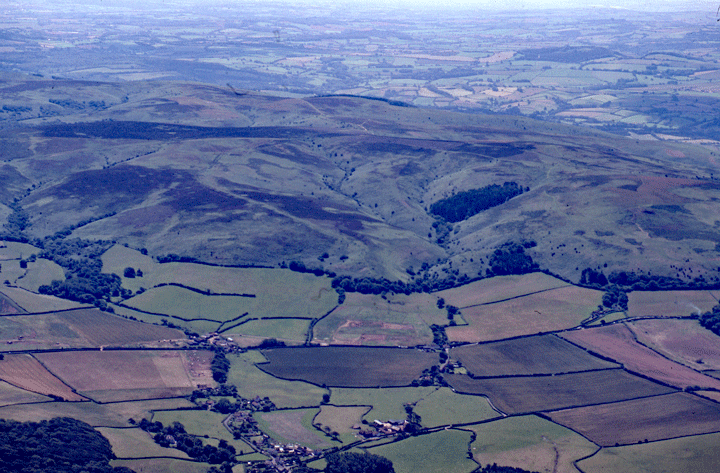
|
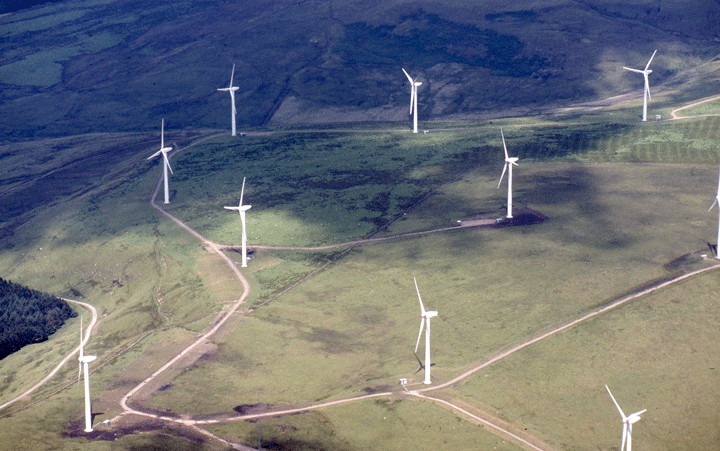 Before long we are descending over the Gower Pensinula. Swansea refuse to help us radio-wise as they are too busy, so it's back to Cardiff who are hugely helpful, even at this range, and we head for the Brecon Beacons where the clouds come down and the ground comes up. Suddenly we're skimming the undersides of the clouds at 3800ft, the ground is only 2000ft below, and it's rough. It's amazing how different the weather is here to over the Bristol Channel.
Before long we are descending over the Gower Pensinula. Swansea refuse to help us radio-wise as they are too busy, so it's back to Cardiff who are hugely helpful, even at this range, and we head for the Brecon Beacons where the clouds come down and the ground comes up. Suddenly we're skimming the undersides of the clouds at 3800ft, the ground is only 2000ft below, and it's rough. It's amazing how different the weather is here to over the Bristol Channel.
Eventually we break through to the lower ground near the Severn Bridges and head North, change back to Brize Radar and turn East for home with the wind behind us. Within 20 minutes we can see Didcot power station and the chimney near the airfield. Change back to Oxford, do a crosswind join and get blown outwards towards Danger Area 129: parachutists over Weston-on-the-Green. Need to be careful there.
Now what's the wind? 240 at 13 Kt; OK, that's close to but inside the crosswind limit for runway 19. We'll give 19 a go and if it goes wrong we'll go around and ask for runway 29. Neat but very crabbed approach, tidy flare, gentle touch, bit of a squeal because I've not quite kicked off the crab, then having got straight the wind gets under the upwind wing and we swerve across the runway until I get the wheel back over into wind to kill the lift. Ugh.
Taxy home, shut down and go in. I'm shattered, drenched with sweat and immensely proud. My passengers have thoroughly enjoyed the flight and are amazed at how professional I was (if only they knew........).
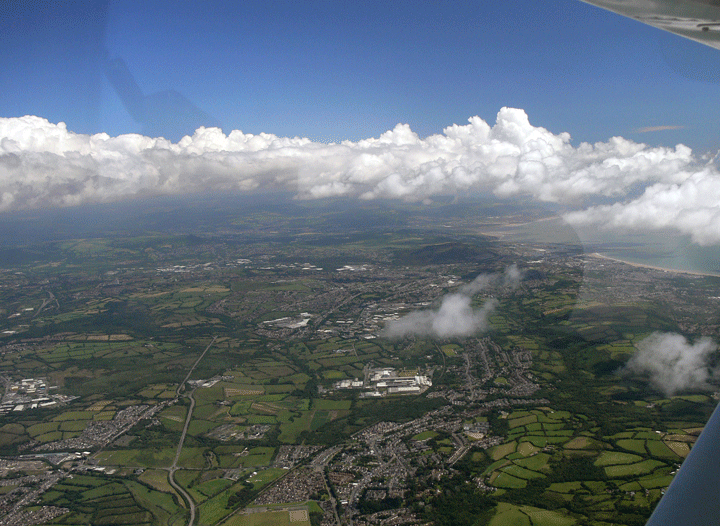
|

|
So I've now flown the equivalent of Oxford to Edinburgh non-stop without doing anything really stupid. A good bit of envelope-stretching; I feel a lot more confident about longer trips now.
The Solent 14 Jul 07
Whilst the summer is here and the weather is not too bad it's worth doing as much flying as you can afford, both in terms of time and money: so Foxtrot Oscar is booked for Saturday afternoon.
The wind is gusting 22Kts from 240°. This is 50° off runway 19 (50° is more than 45° so we use it all as a crosswind component), so outside my personal minima:
- Minimum slant viz 5Km
- Maximum crosswind component 20Kts for take-off
- Maximum crosswind component 15Kts for landing
(always worth reviewing in the light of one's experience).
But by 3pm it's forecast to calm down by 4pm (and it always dies down after 3pm anyway as the thermals lessen), so it's a "Go".
Sam, an 8-hour PPL student, is looking forlorn in the corner so ask him if he wants a ride to the IoW and he agrees: we plog, NOTAM, book out and go. Bit gusty on the take-off but nothing we weren't expecting, head South and Sam flies (very neatly for an 8-hour student, but he has done some gliding) while I do Nav and radio, and take some pictures.
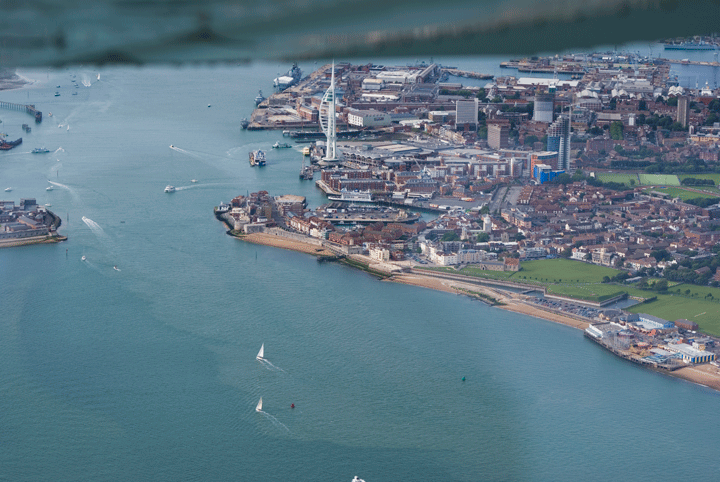
Over Portsmouth we start to descend to 2,000ft for Cowes, look at the watch and conclude that we need to turn around to get home by closing time (and we're short of fuel). I fly us back North via a practise VOR capture, we're back in the circuit by 5.45pm and then the fun begins.
The low fuel light has been on since Didcot, plus Pete's been out in his Mooney and is cleared for a right base approach in to 19. By the time we are turning left base he still hasn't appeared, so we pull in some throttle and go round, by which point I'm keen to do a tight circuit in case of having to do a glide approach if we run out of fuel.....
The tower clears us to land and gives us winds of 240° at 15Kts, right on my limits, so this time I opt for 2 stages of flap rather than 3 (it's a long runway), and nail it at 75Kts to give us a bit of leeway. More speed means the crosswind component is less of an issue, according to Ron Fowler in Making perfect landings (my current bedside reading). Keen to impress Sam I get the approach right, flare still in the crab, kick off just about all the crab, pop the wheel hard over before the mains touch, and we're gently down. Having watched a pilot bounce a 172 three times earlier in the afternoon I'm keen not to bounce it.
At which point I make the cardinal error of centering the wheel. A gust attacks us and we swerve about the runway. And it was all going so well......
Recover (it's a wide runway) and keep the wheel over to prevent repetitions, roll out and taxy in. The Tower signs off for the evening and we shut down at 5.59pm. Definitely the last flight of the day!
Pete apologies for the go around but really I should have orbited until I had identified him. Oh well, another couple of lessons learned.
It's interesting being on the "more experienced" side of mutual flying.
IFamily evening local 7 Aug 07
The August weather has at last become consistently sunny and afternoon meetings have finished early.
How about an evening flying?
Ring the airfield: yes, there's a spare Cessna.
Ring Ness: she's free too, so we meet at the airfield where I've checked out the plane and we just need some fuel.
Load up and taxi over to the fuel, fill up and check the filler caps and levels, then start up and......
Can't get the Tower to respond.
Try again. Nope.
Test Radio. Nope.
Taxi back to the apron, carefully avoiding all aircraft, shut down, run in, ask whether the Tower has gone home. No, but they are using the Approach frequency for all operations.
Back to the aircraft feeling stupid, start up, change to Approach, call the Tower. This time they answer, I apologise for the unauthorised taxi and ask for clearance again. They admit that they are as confused by the change as we are......
A local trip, this, for sightseeing: down on the Tech log under "Purpose of flight" as "Fun"”. Nessa's first real flight.
We take off Northbound, and with only 2½ passengers the Cessna leaps in to the air like some smooth celestial hand has taken hold and said "Today You Fly" in some booming Old Testament-type voice. Sorry, too much Monty Python in my youth....
Danger Area 129 is Active and a damned great C-130 is dropping parachutists just to the North so we'll stay well South of the Danger Area. That C-130 looks very large and is heading in our direction! A swift exit South, I think......
As the Tower is doing combined Tower-type things and Approach-type things we stay on the same frequency, request a Flight Information Service and head South. At 3,500 ft the whole of Oxford gleams in the sunshine and looking East the Chilterns seem toy-like. Way in the distance, white buildings announce the location of London.
Up here the air is smooth and we are soon over Abingdon where we drop to 1,000ft and do some orbits around Mum's house, then climbing we proceed to Longworth for more sightseeing orbits. There is not a cloud in the sky, although being evening it is a little hazy, so the Landing Light goes ON.

|

|
|---|
Climb out Eastbound and skirt the South-East corner of Oxford. As it's during the week, we try to contact Benson Radar without any success, so it's back to Oxford Approach / Tower / Ground / Maintenance / News / Sport / Traffic, who sound bored.
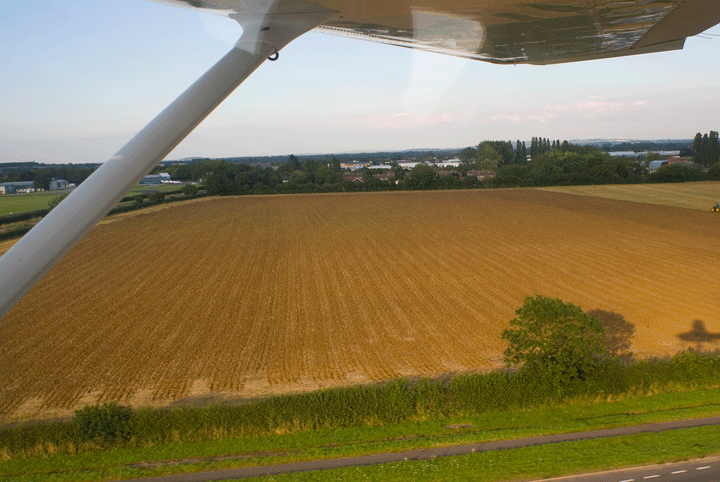
|

|
|---|
We orbit all the local reference points, then head South East for Watlington. A few low-level thermals near the Chilterns are noticeable but otherwise all is smooth and the views are amazing. It occurred to me: am I flying with co-ordinated rudder? I feel I am but today we'll concentrate on checking. I find that if you don't use any rudder you feel like you're fighting the aircraft, but with a bit of rudder it feels so much less dramatic (and the aircraft wants to do what you tell it to).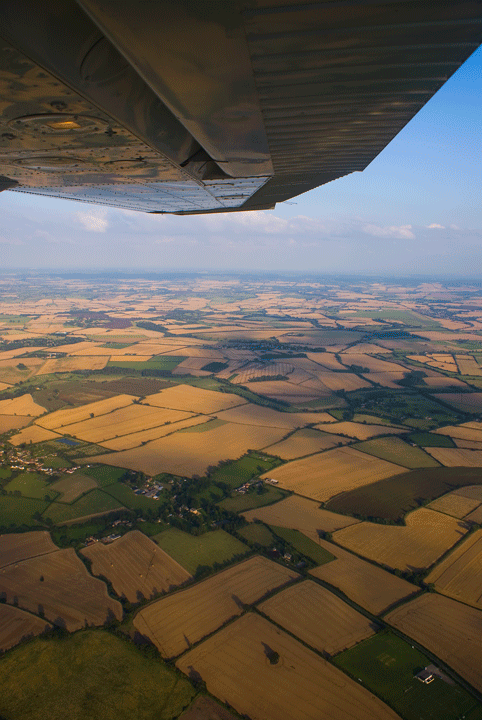
Ho hum, perhaps I'm just being picky.
We fly some orbits over a friend's house then climb out back towards Oxford.
It's amazing how quickly you can cover ground at 120Kts direct; within 5 minutes we are manoeuvring for a downwind join for 01.
Mind the Danger Area (another C-130 dropping yet more parachutists), throttle back to 90Kts, Downwind checks, then follow a PA-28 round the circuit, dropping the flaps at the top of the white arc, drop to 75Kt and get a Land After, fly a slightly bumpy approach then flare over the numbers and.... misjudge the flare, get a little bounce, a bit of power to stabilise, re-flare, feel for the tarmac..... and we're down.
Roll out, flaps up, taxi in, shut down.
Haverfordwest and Bembridge 27 Aug 07
We've got rid of the children for the Bank Holiday weekend, the Monday dawns bright and clear, the Crab and Lobster at Bembridge is booked for lunch and the aircraft is all arranged. Serendipity, for once.
So just the two of us, armed with Hobnobs and water bottle, aim for an early start and a small detour via West Wales.
Since my low-fuel warning I've been paranoid about fuel problems, so now have a neat little tank dipper (which I must be very careful about not dropping inside the tanks!) to measure the amount of fuel that's actually in there (not what the gauges say is in there), and thus to calculate real-world fuel usage.
We've got 52 US Gallons.
Start up, taxy, power-check, and we're ready to depart from 01. I love this moment: stationary, looking down the long, straight tarmac pregnant with possibilities, before I slide the long plunger in and the aircraft surges forward, correct with rudder, speed climbing, Ts & Ps good, 65Kt, slight back-pressure and the aircraft flies itself off. Nose down a touch, trim for 75Kt and climb out. 500 feet is good enough for a turn if necessary to bring us back to the airfield in the event of a power failure but we maintain runway heading to 1,000ft AAL then turn left for Charlbury.
Climb to 3,000ft, acquire the Brecon VOR and start the stopwatch over Charlbury. A bit back and forth with the VOR tracking (could be the range) then we settle down and with a Brize FIS within 20 minutes (and a couple of Hobnobs) we're over Wales and diverting for an aerial look at where we stayed a few weeekends earlier, near Usk. Those huge hills we ground up and down look tiny from 3,500ft, and as we overfly the coal mines and industrial valleys the weather closes in. The weather is always awful over here whenever I fly, but further West the population thins, the weather improves and the scenery is stunning.

|

|
The sky is so empty we risk a close transit of the Brecon VOR, lonely on the top of a hill like a little stranded UFO. Tracking Outbound now (I like this instrument stuff, VFR navigation sucks!) we head for Pembrokeshire (and more Hobnobs); all we have to do is find Haverfordwest airfield. After a false alarm (abandoned airfield) it eventually looms up in the distance. and we join crosswind for a left hand circuit.
All radio calls are answered with a laconic "Roger", no matter what I say, but as we're the only aircraft in the circuit it probably doesn't matter; make it up as you go along. As this is just an A/G station, not a proper controlled airfield, I just tell them what I'm doing and no one seems to mind. Glad I didn't learn to fly here, though, my radio skills would be non-existent!

An Instructor taught me a nifty trick when approaching a new airfield for calculating what directions to fly the various circuit legs: if, say, your target runway is 03, then on the Downwind leg 03 should be at the bottom of the compass, on Base and Crosswind legs it should be one one side (depending on the circuit direction) and, most importantly, on Final it should be at, or nearly at, the top! I've found this a useful "bear of little brain" tool at new fields and allows reasonably accurate circuits to be flown wherever you fly to. Makes you look almost competent......
A gusty North wind greets us on Final, which makes the landing a little bumpy, but I'm getting the hang of stopping the Cessna better now, and we backtrack 03 and park. It's us and an N-Reg Cirrus on the apron. And some tumbleweed blowing through......
In for a landing fee and an excellent cup of coffee, but it's damned cold here. It's meant to be August, dammit!
Time is ticking on, so we book out, dip the tanks, taxy to the holding point and depart, avoiding the tumbleweed.
"G-FO airborne, right turnout, to Pembrey, thanks for your help..."
"Roger...."
This area is dominated by massive areas of the sea designated as Danger Areas and used as ranges by the military. You really do not want to be infringing these areas as they fire big guns in the sky from ships, so a chat with London Info (impressive he can hear us all the way out here at 3,000ft in West Wales) confirms that all is inactive and we route straight out over the water.
I'm very nervous about flying over the water, as we now fly 47 nautical miles diagonally across the Bristol Channel (Dover-Calais is 19nm) so we climb to 6,000ft. Our course keeps us just 10 miles from land at all points in the crossing, so I reckon I can land on the beach if needs be. It's very smooth, the view is gob-smacking and the weather just gorgeous. Cardiff Radar are enormously helpful and offer a Zone Transit at a height of our choosing, details passing to Exeter, tea and more Hobnobs.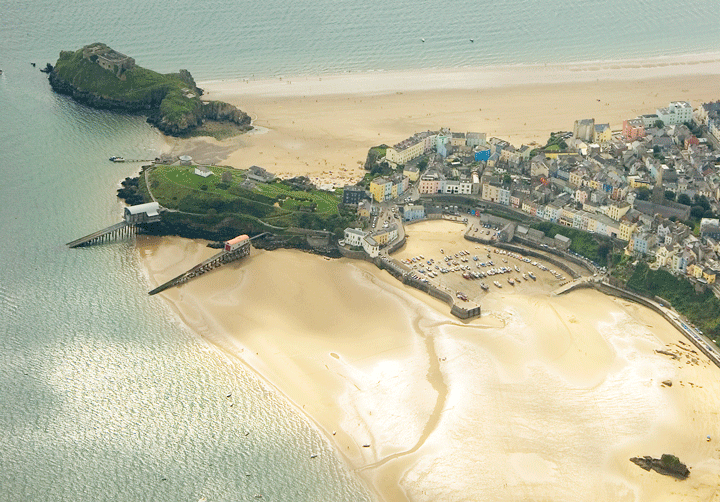
Coasting in near Minehead heading South East the clouds build up to the point where, whilst I am probably technically legal as somewhere in the distance I can see a hole through which a splash of colour designates the ground, for all practical purposes we are IMC.
Eventually the South coast emerges and the cloud ends, Exeter passes us to Bournemouth who fuss over the GA traffic as they have a 737 inbound. We descend and watch the traffic jams going in to Weymouth (tee hee!) before Bournemouth request that we descend further to below 2,000ft over Sandbanks. The numbers of boats both moored and sailing is quite staggering; still, the more that sail the fewer that fly, and the view is better (and the Hobnobs drier) up here......
Aiming at The Needles we transit to the Isle of Wight and change to Bembridge Radio, expecting to be #7 to land but no, we're straight in to Downwind and only one aircraft ahead. Out over the sea and round to Final; I want a bit of speed on the approach as there are sea breezes and a crosswind, but I'm too high all the way down the approach, power right back and when I flare it floats three quarters of the runway before the upslope catches the wheels and we brake hard in to the overrun for a grass taxy to the apron. Frankly, I should have gone around.
Pay the Landing Fee and the very helpful office finds us a taxi to the Crab and Lobster for a damned good lobster lunch, a coffee in the garden of the hotel a few doors down then a gentle walk in the warm sunshine back to the field.
But what's this? The aircraft has been parked on a right-hand slope for the last 3 hours and the cross-feed has siphoned virtually all the fuel from the left hand tank in to the right hand one. I dip both tanks and the left one is completely dry. Now what? Will it feed back? Will the engine stop?
I think it will feed back, the selector is on Both and there's plenty in the right hand tank so we start up, taxy out and depart, mentally checking fields for a forced landing as we climb. But the donkey keeps kicking and within a few minutes we are over Portsmouth, on a Solent FIS and heading North, where it is hazy and busy.
Popham and Lasham are heaving with gliders so we climb as far as possible until we are scraping the undersides of the clouds, and 35 minutes of "Low fuel Left Tank" gets us back over Oxford, the right tank slowly running down. The weather here is nothing like as good as it is on the Isle of Wight!

|
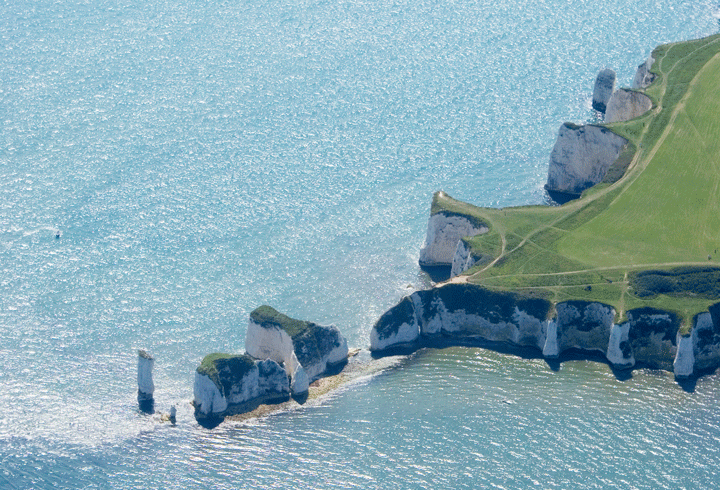
|

|

|
A request for a Join elicits a suggestion I join Right Base..... I haven't done one of these before, I've always Joined downwind/crosswind/overhead, so a little careful thought is called for. I manage to get in to the right place at the right speed and the right height with the right amount of flaps but of course forget the BUMMFFTCHH checks (eek!), although I have richened the mixture as we started to descend so it's not the end of the world. Late afternoon thermals buffet us on Final, then we are flaring at 65Kt and.... bugger, misjudge it again, a little bounce, a smidge of throttle then flaaaaaaaaare and touch gently, roll out, flaps up, squawk STBY, vacate the runway, request a taxy and roll home.
Dip the (still asymmetric) tanks and work out the fuel consumption, which turns out to be 8.2 US Gallons per hour. The gauges are accurate!
The GPS logs says we covered 472 Statute miles, we used 29.97 Imperial Gallons, so averaged 15.74mpg and landed with a reserve of 16USG or 2 hours flying. Will always dip from now on, but I now have more confidence in my ability to read the fuel state and estimate reserves.

|

|
|---|---|
As I fly more, I'm beginnning to relax and spend more time looking outside, because I know from a structured scan what's going on inside. I'm beginning to worry less about navigation whilst still retaining dead reckoning accuracy, visual reference point tracking, VOR tracking and a GPS backup. It's all beginning to feel easier.
And, apparently, that flight is of adequate length and complexity to qualify as a CPL cross-country. Ooo er, Missus....
Shobdon 8 Sep 07
I've flown the whole family, except my poor sister. We've had one attempt earlier in the Summer scrubbed because it was hazy, so today we'll have another go. She's got 10 hours or so on Cessnas, so she'll probably fly a bit.
Decide to turn up early and do some circuits first: I'm finding it hard to adjust to the new, wider runway at Oxford and I need to get my landings better.
The weather forecast is for good visibility, but when I arrive it looks a bit grotty. Apparently it's not much good for anything except circuits, cloud base 1300ft, and very hazy, which is a real shame as I don't really want to disappoint Big Sis. So I opt (as everyone should) to go and have a look.
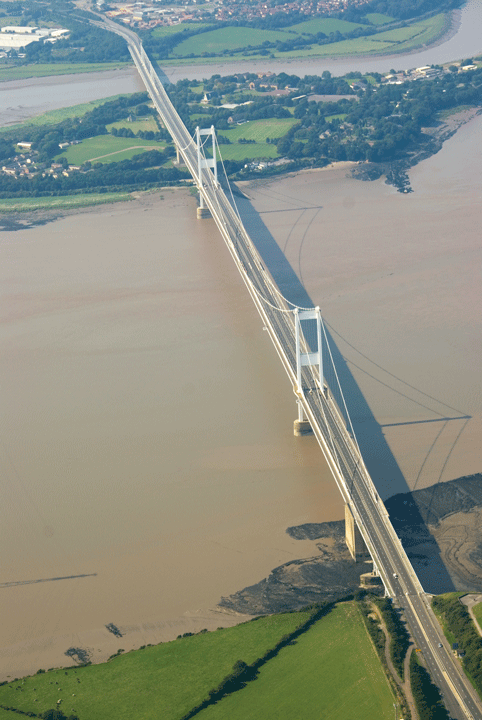
|
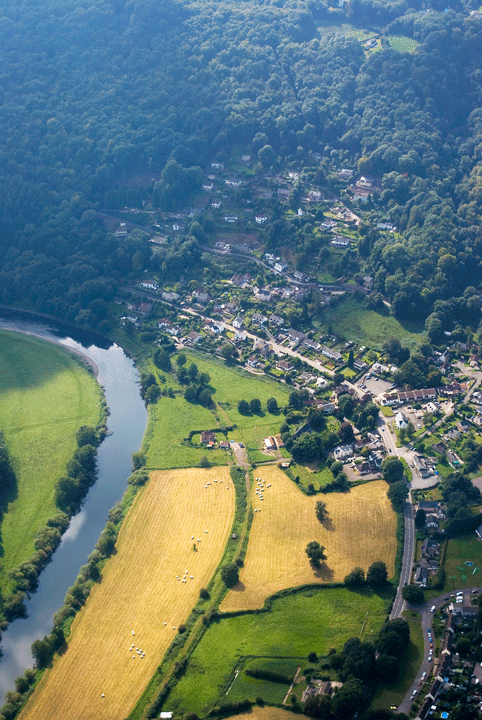
|
|---|
Start-up, take-off and actually the viz is absolutely brilliant, the cloudbase is at 2,200ft and it's smooth and calm. Round on to Base Leg, slow to 80Kt, 1 stage of flaps, trim for 75Kt, on to Final, call Final, 2 stages of flap, trim for 75Kt and really concentrate on flying the perfect approach. Now, this runway is deceptive, don't flare too late. Flare over the numbers, and she floats for ever. Squeeze the last few Knots out of the wings and she settles, a little untidily, on to the centreline. Keep pulling back and feel the nosewheel touch, then tidy up, full throttle, boot of rudder and we're away. I didn't bounce it, but by God we used a lot of runway.
So, the next time, 3 stages of flap on Final and trim for 65Kt. More relaxed, less float, she settles more smoothly, and we stop in much less runway. That's the sweet spot, so we do a couple of those and that's the landing monster back in the box for a while. Taxy to the pumps and fill up (first time I've done this, double-check the caps are on and tight).
So, having ascertained that the weather is good enough to fly in, Big Sis and I get the the map out and decide to go over the Wye Valley. That'll give me VOR capture practise and Big Sis some flying.
Once airborne and West of the show-jumping at Blenheim it's a bit bumpy and the cloudbase is only 2,300ft or so but within 10 minutes we're in bright sunshine, up at 3,500ft and the country is spread out below us. We look back at the Oxfordshire clag to the East and reckon we've picked the right direction to fly in.
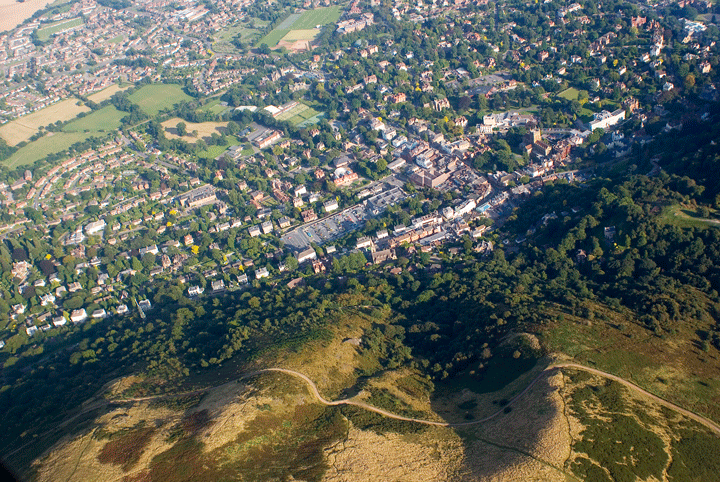
|

|

|

|
|---|
The Wye Valley is beautiful and we circle some interesting bits until Big Sis looks South and says "what's that down there?" It's the Severn Bridge, gleaming in the sunshine and within a few minutes we are circling it while I chat to Cardiff.
We both decide the pre-flight drink has gone through us and look for the nearest airfield that's in the sunshine.
Shobdon looks handy, so we head North, dodge the controlled airspace bits and talk to Shobdon, politely requesting PPR and joining instructions and receiving "27 Left hand, report 5 miles".
Now all we've got to do is find them, which with Shobdon is never all that easy.
Some airfields are easy to find, but Shobdon is constantly elusive, regardless of your approach direction.
I've got the ADF tracking their beacon so we know what direction they're in, and after a few minutes of squinting we spot the field and descend in to the pattern.
Now, Big Sis is actually the first person who can fly I've taken up in the Cessna, so I need to do an impressive landing, and manage to pull off quite a neat crabbed approach with a brisk 90° crosswind, flare, kick off the crab at 2 feet and roll out neatly, but miss the intersection and have to roll all the way to the end.... oh, the shame!
Park up (in the wrong place, of course), manhandle the aircraft in to the right place, pay our landing fee and order a well-deserved tea and bacon butty from the same stunner as my previous visit.
We sit out in the bright sunshine and watch the aircraft; it's really hot and this is quite definitely the best place to be. A glider tug is working hard, helicopters come and go, Cessnas refuel, planes come and go. It's very busy.
Eventually, reluctantly, we decide to return to gloomy Oxford and having booked out and dipped the tanks we start up and leave. It feels like the end of a sunny foreign holiday, when you have to go back to cold old England.
Half way back, we cross over Great Malvern and I stand the Cessna on a wingtip so Big Sis can photograph the ridge. It's absolutely beautiful and there's no one around. It never ceases to amaze me how quiet the sky is everywhere, but especially over here.
As we pass Little Rissington heading 120° we can see the cloud bank over Oxford and descend in to the gloom for some steep turns over Big Sis's cottage and a neat crosswind join for 01. Loads of concentration on the approach, hit the sweet spot and we're down smoothly and taxying in, glad we had personally checked out the weather and found it to be better Out West.
Advanced crosswind landings 1 Dec 07
The club Cherokee 180 is back from the menders having been electrocuted earlier in the year by being flown in to a power line, blacking out half of Kidlington. Time for a checkout.
It's windy today, close to the crosswind limits, so may be a little bumpy. Most are not stupid enough to want to fly today, so it's very quiet.
The 180 is a little lighter inside, and there's more room in the back, but the controls are (mainly) in the right places, and soon we are backtracking the grass runway (the taxiway is dug up for new apron construction) and ready to go. The moment we leave the ground the wind hits us and we fight the gusts. The extra power is extremely handy and we are at circuit height before we turn crosswind. Danger Area 129 is Active and we are being blown towards it so must be careful. It's interesting having to rein in the aircraft in the circuit, rather than running the engine flat out all the time.
A cautious circuit and we start the descent. A landing bizjet has just reported windshear at 100ft so we note that and raise our projected approach speed to 80Kt+, turn Final and apart from a bit more power required to keep it on track, it all feels very familiar. The approach is extremely bumpy, especially at around 100ft, and hugely crabbed, but I keep it on course and as we drop below the tree-line and flare it all calms down and we drop gently on to the runway, clean up and take off again. The rain then arrives in some style to add to the fun, and although it's all good practise we decide to abandon while we still have an aircraft.
Round the circuit again and this one we'll do flapless, so at 85Kt. Fly the approach between the raindrops, the wind stronger this time, a little high at my aiming point but we've got plenty of runway, so drift down crabbed and land smoothly further down, a touch of brakes and we're home.
We sit in the aircraft for 10 minutes waiting for the rainstorm to abate before putting the cover on and running in. The rest of my checkout will have to wait.
PA28-180 Night flying 13 Dec 07
I've a flight booked for Saturday in the Cherokee 180 so need to complete my checkout. The weather conditions could not be more different from the previous attempt: cold, sunny and calm.
We check out and do circuits as the light fades and the runways lights go on. At the end of the first circuit the aircraft ahead still hasn't vacated the runway, so we go round, then just slot back in to the old circuits groove. My circuits start out a little long, maybe I've been doing too much night training, anyway it soon settles down and we consistently hit the tarmac at the same point, on the centreline, with little drama. On one circuit we are a little high on the approach as we turn Final, and he suggests I get at least one red on the PAPIs, which is fair enough except that I deliberately don't fly by the PAPIs because not all runways have them, and anyway I find them a distraction.
As we descend in to the imaginary approach cone we get first one, then two reds and he goes to sleep in the corner. He's so quiet I can't help thinking I must be doing something terribly wrong, but after a few circuits and as we hit official Night he suggests we land, and reckons I've got the hang of it. All pretty painless really, and anyway as I learned a long time ago, no circuit is ever a wasted circuit......
Popham 15 Dec 07
Today Stephen and I are off to Popham for a little Mutual PPL flying: I'll fly out, he'll fly back.
It's cold checking the aircraft, and the sky looks hazy. It being first thing Saturday morning, every PFT aircraft is being started up at once, it feels like a WWII Spitfire scramble as we all taxy out, jockeying for position. The 180 has a good heater and within a couple of minutes we're warm again.
 We climb towards our planned altitude of 3,000ft as we head South but Oxford disappears in the murk at 2,700ft so we elect to fly at 2,500ft where we can see a bit more. South over West Oxford, pick up the Compton VOR, change to Farnborough Radar and cruise South at 115Kts. We see two other aircraft which both cross our path a little close for comfort: everyone is flying at the cloudbase so we descend a little and turn all the lights on.
We climb towards our planned altitude of 3,000ft as we head South but Oxford disappears in the murk at 2,700ft so we elect to fly at 2,500ft where we can see a bit more. South over West Oxford, pick up the Compton VOR, change to Farnborough Radar and cruise South at 115Kts. We see two other aircraft which both cross our path a little close for comfort: everyone is flying at the cloudbase so we descend a little and turn all the lights on.
Within a few minutes we are within sight of Popham so we switch to their radio and ask for an overhead Join for 08 left hand. Descending in to their 800ft QFE circuit we start to look for all the places the maps say we must avoid. Popham has weird and wonderful circuits and approaches due to complaining neighbours, and we thread our way around the no-go areas before executing an offset approach, my first.
We can always go round if it doesn't look right, but we descend and it does, I get a bit high but we're on 2 stages of flap and with idle power that soon corrects itself. As we reach the end of the grass runway I turn in to it, flare and we drop on to the muddy grass neatly, letting it roll and not, as requested, using any brakes before taxying over to the Clubhouse and shutting down.
Time for a coffee and a bacon butty, I think.
Popham are very friendly and I will definitely come back. We are the first landing of the day but soon the clubhouse is full of pilots. I'll bet this gets very busy in the summer.
We're cleared to take off on 03, which is not very used and after some discussion that nearly has us using the taxiway to take off from, and some interesting power-checks-while-sliding, Stephen performs a neat take-off and we pootle back towards Oxford.
A Northbound Army Gazelle spots us on climb out and drops below us, but we don't see any other aircraft as we pass Newbury for some sight-seeing and photo taking at his house and my friend George's strip, which looks considerably more inviting from the air than it does from the ground, before returning to the increasingly busy Oxford circuit.
Cleared in to the overhead, the harassed-sounding Approach asks us to orbit with IFR traffic descending from the OX Hold above us (it's runway 01, he's on the 100 procedure, so he's off to the West of us), and a busy-sounding circuit below. After a couple of rotations we're cleared down and Stephen flies it exactly as I would have flown it, gently on to the tarmac then rolling out. We vacate on to 11 then right turn to grass 23 and taxy home.
Nothing floats like a C172 26 Jan 08
Having managed not to fly for real (plenty of Flight Sim IMC Nav runs, though) during the whole of February (not for a lack of trying, but the days I book simply don't coincide with flyable weather), a spare weekday morning in March allows a little solo trip to Shoreham to see my friends at Eastern Atlantic Helicopters, something I've been promising myself for a while. The wind is a bit gusty and conditions are marginal, but if you wait for perfect conditions you'd never get any flying done!
I haven't flown the Cessna 172 since last September, having been in IMC training in PA-28s all winter, so I need a checkout first. Off with my Instructor, the wind is 270° 13Kts which on runway 19 is 80° off the runway, close to the published airframe limits. We've been here before and had problems with the Cessna.
We take off, right-turn outbound and head for the empty spaces North-West of Woodstock for a PFL; he pulls the throttle and I turn downwind, trim for 75Kts, designate a field and perform a constant-aspect anti-clockwise turn in to it.
At 1,000ft I decide that field is crap as it's ploughed, and the one next to it is better as it's grass and uphill, so change and at 400ft by which time we are both convinced I can make it comfortably (OK, I cheat a bit by "warming" the engine, but we'd still have made it), we throw it away and head back for Oxford.
We're still very close to Oxford and acquiring a right-base join, swapping frequencies, downwind checks and positioning with a serious crab on for Final have to be done in a very short space of time. There was a time I would have really struggled with the workload but have joined right base for this runway at night with no instruments, so this is easy.....
Big crab on Final, 75Kts, nice flare and we're down with a little squeak but no bounce. Clean up, boot it, climb out and do a circuit. He reckons I should do it at 80Kts because it's gusty, so this time we do a "Bembridge special" and float half way down the runway before the wheels touch. It didn't feel any more in control than before; I'm not convinced.
We go in, I drop him off and head out 1 PoB. Check all the Navaids after the power checks, ensure I have a plan for the climbout (learned that from cocking it up in FS X) and take off.
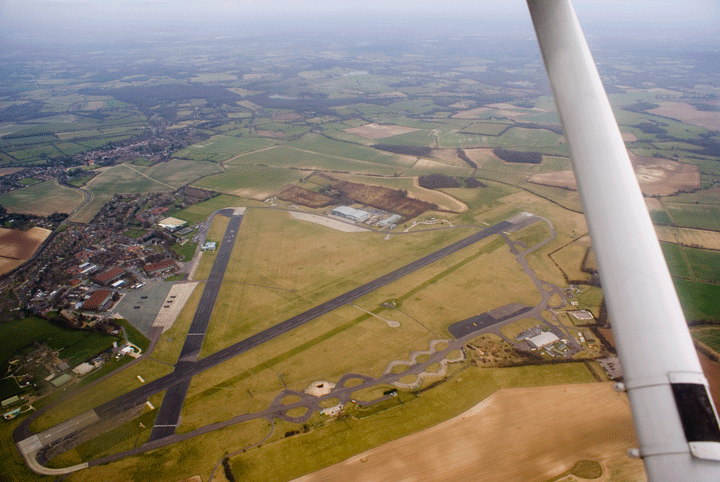
Out of the circuit, head South, VOR to Compton, change to Farnborough, VOR Compton to Midhurst, Midhurst to Shoreham, change to Shoreham, join overhead at 2,000ft then turn and descend on the dead side behind a PA-28 that flies the crosswind leg so far out to sea we almost conflict with take-off traffic. I stay on his tail: he's so close I'm not losing visual with him for a moment. I hang back and fly the circuit over the South Downs; by the time we get to Final for runway 20 with the wind 15Kts 270° I'm sufficiently far behind him to get a land after, but I'm now too high and too fast. Well, my Instructor did say 80Kts in a crosswind....
Give it full flap and no throttle for the last mile; glide approach, flare 1/3rd of the way down the runway and of course it floats and floats. Nothing floats like a Cessna 10Kt too fast on the approach......
Eventually we get a squeak from the mains and I have to boot the brakes to stop before the turn off, but we're down. Damn that high speed approach....
One landing fee, a cup of tea with my friends and a tour round their hot tub later, we're off on the return leg, using R25 grass. VOR all the way back (I'm getting more relaxed about using them) then contact Oxford, who sound harrassed because the wind is right across runway 19 and they don't like using 29 because it's short. So I take my time over the last few miles.
While I'm pottering in, I hear a student (I reckon on his 1st flight) getting it all wrong on the radio: mixing up hold positions, QNH and runway, the Instructor helping in the background, just like I used to when I started out. Huge sympathy radiating from all on frequency, we've all been there, where you press the button and your brain turns to mush. The Tower were absolutely brilliant, very tolerant and helpful.
Join Downwind for 19 but the wind is now gusting 18Kts, outside airframe limits, so opt for runway 29 instead. If I float on this one I'm in the trees....
To shake the approach Etch-a-Sketch in my head I orbit once, then reposition carefully for 29, swing it wide and do a long, long Final. Come right back to 65Kts and full flap, get it very precisely right and hold it all the way down. Ground speed is about 40Kts so it takes a while, but I put the mains right on the numbers and pull up half way down the runway, at 380m. All very low-stress, actually, don't know what I was worried about.
Taxy home on the main runway, park up and shut down, go in.
Then come right back out, start up again, call for taxy for repositioning and park it in the correct spot this time....
Down at the Sunset Grill 27 Mar 08
March has been stormy and we have been busy preparing to move house but lots of desktop RANT practise has made me more confident of most of the IMC head work.
Coming home from a client meeting tonight, despite dire weather forecasts the clouds have cleared and it's too good an opportunity to miss. So I wander in on the off-chance and fortunately the Cessna is available. Interestingly, all the touring aircraft head out at once, lots of people feel the same way about the conditions.
Book out, wander out to the aircraft and take off in to beautifully smooth conditions. Above 1,000ft it's trim for hands off, keep two fingers lightly on the yoke and enjoy the scenery. After all the work, it's so nice to fly purely for pleasure. And Donald Fagen provides the soundtrack (I bought Long Road out of Eden last week and was just capitivated by hearing that voice again. I mean, that voice sung Hotel California, One of these nights and The boys of Summer. Send shivers up your spine, it does....).
I never tire of watching the earth from the sky, it looks so different depending on what height you're at, and the light tonight is fantastic. As the sun descends the colours change and everything looks so peaceful from up here.
Over the River Stour I descend to 1,000ft and just bimble up the valley and round a couple of low hills as the sun descends, then wander back at low speed, watching the cars and the cows going about their business. A Downwind join for 01, and a 65Kt full-flap approach in the calm conditions; let's see if we can do a real greaser..... oh, yes....
What a lovely way to spend an hour.
Facing down a 737: Coventry 26 Apr 08
It's mid-week and Stephen and I agree to meet up, go out for supper and talk about buying an aeroplane. So we're in at Oxford as everybody else is going home, grab the aircraft key, the hairy fuel key and the Tech log. We haven't got a clue where we're going, but 30 minutes in the café resolves that: we're off to Coventry.
A two-man A Check and we're in the aircraft with me in the left hand seat and the engine started, doing the checks when the engine coughs, sputters..... and stops.
We look at each other; what have we missed and is that going to happen in flight?
The fuel cock is turned to the left, which is of course the "off" position. Neither of us had spotted it, which sobers us up a lot.
Once fueled up with the hairy key we head North in to iffy-looking weather: the NOTAMs say light showers, and we soon encounter one which is bumpy but the viz is OK and within 20 minutes we are on the radio to Coventry, who ask us to route via a cement works that doesn't appear on the map, the AFE book or indeed, at first, even the GPS box. We do find it after a chat with the Tower, but it's far from obvious...
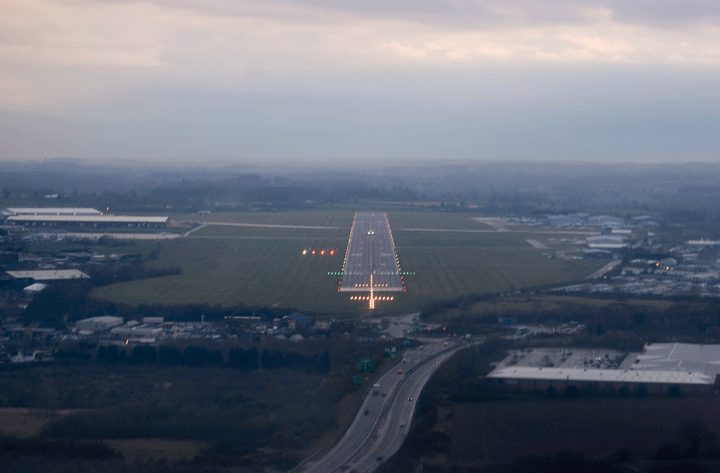
As we prepare for a Left Base Join descending to 1,000ft QFE and with pre-landing checks complete, the evening is now beautiful with the sun sinking. Then the Tower advises us we are number two to land to a Boeing 737. What? He's 100 times our size. Are we at the right airport? Yes, and here he is coming now, lights a-flashing. Ooh er, missus, we're really playing with the big boys now.
His Wake Turbulence will turn us over if we're not careful, so we opt to orbit once for a little separation and just as well we do because as we turn Final here he is backtracking up the runway with all his landing lights on.
"Er, Golf Echo Echo Final...."
"Golf Echo Echo continue approach..."
"Er......continue approach, Golf Echo Echo"
Gulp.
Just at the point where I'm seriously thinking about throwing it away and going around he turns off onto the Taxiway, we are cleared to land and we drop on to the huge tarmac runway.
Taxi-ing away to the right we are instructed to park on the grass; we deplane and head for the GA terminal where they are hugely unprepared for us and our desire to pay our Landing Fee. However, we do eventually find civilisation, a Landing Fee machine, friendly people and a decent supper at a local pub. Thanks, everyone at Almat!
Much later on, we return in the pitch black to a cold, dark grass aircraft park, pre-flight and start up. Stephen is to return us to Oxford and as we both have Night Ratings this is a great opportunity to keep them both current.
Despite a lot of misting up of the windscreen we get started and manage to find our way on to the (unlit) taxiway, hold for an incoming SAAB 340 then backtrack with him following until he turns off, we turn round and take-off. The runway is so long we are at 1,000ft before passing the end of the runway!
We turn for home and the weather has cleared: we can see Didcot and Beckley almost immediately. Night flying is so often smooth and tonight is no exception; the earth slides past beneath us and far too soon we are descending for a Downwind Join for 01 at Oxford. Stephen puts us on the ground in a very efficient manner and we request an apron "stop and swap" then one circuit for my currency, to which they readily agree.
Rotating I get a quick flash from the stall warner (Huh? Never had that before) then we're away for a smooth circuit. Back in to the approach cone I get a little high, then drop neatly back in to the cone as we cross the A44 for a gentle flare and arrival.
All current now, we taxy in, shut down and put the cover on.
Then we take the cover off, put the control lock in and put the cover back on. Oh well, at least we parked it in the right place.....
Coventry is a great evening destination and one we will repeat, most definitely.
First time to Cornwall 27 Apr 08
It's funny how little ideas turn in to Big Adventures.
The stated plan was to go to Dunkeswell on Sunday; that's not a Big Adventure; I've flown over Dunkeswell before, it's a bimble.
But throw in the idea of flying down to Cornwall the previous evening three-up via Compton Abbas, doing some sightseeing in the morning, flying to Dunkeswell for lunch then coming home, mix in some bloody awful weather forecasts and a pick-up in Perranporth so we'd be four-up coming home, and the adventure becomes somewhat grander.
After an uneventful flight (apart from hearing some poor inattentive pilot bust the Brize zone and get reported for doing so...) in the Cessna down to Compton Abbas in the bright afternoon sunshine, Stephen plonks us neatly on to 26 in a sporting crosswind, and we retire to the restaurant for a Coke.
Compton Abbas couldn't be less like Oxford if it tried: it's a real GA airfield on the top of a hill, with a bouncy grass runway and a 500ft drop straight after take off. The radio responses are almost as laconic as Haverfordwest (basically make it up yourself and they will reply "Roger" every time), lots of people having tea in the immaculate viewing area watching people landing and taking-off, Yaks doing aerobatics in the overhead, the enthusiasm is high; everyone is very friendly and the facilities are outstanding. We'll be back.
I'm now P1 so swing Fox Oscar on to the runway; we bounce over the muddy bits and fling ourselves out over the drop. The scenery is fantastic and as we climb South West we can see the sea off to our left.

|

|
|---|---|
We will be arriving at Perranporth after-hours, so discuss alternates if for some reason we can't find it or the weather turns: Exeter sounds good, or ultimately we have the fuel to get back to Oxford, even. The comfort of a Night rating is not worrying about being caught out by sunset.
Navigating VFR backed up by two Garmin 296s we drone on through the late afternoon talking to Exeter, then to St Mawgan. St Mawgan gives us a Zone Transit and we descend towards Perranporth, making blind calls. The visibility has deteriorated and is now around 4-5Km in haze as the sun sinks; the GPS is telling us we're in the right place, and we've descended to 1,000ft, but where's the field?
Suddenly it appears and we kink around some houses on to a short Final for 23. The plan is to overfly 23, do a right hand circuit and drop in, but I reckon we can get in from here, so 3 stages of flap, chop the throttle, 65Kts and ease it down. Catch a bit of float on the round out, land a bit skewed, then we're rolling. Bit of nosewheel shimmy as we brake, and we're taxying on to the grass and tying down. The place is deserted and nowhere near as well-kempt as Compton Abbas, but everything is serviceable, and we potter off for an evening in Falmouth.
The weather forecast for tomorrow reads "heavy rain"........
We wake up to the patter of raindrops on the roof; the forecast shows a band of heavy rain crossing the country Eastwards. Looks like we may get back late once the front has gone through.
But during breakfast the rain clears and the sun comes out; we drive back to the field, pay our previous day's landing fee and plan a little sightseeing around Lands End. There are fluffy clouds around but nothing major, so we load up, take-off and head West for Lands End, about 10 minutes away.
Straight after take-off looking straight down to the sea pounding away at the cliffs from 1,000ft is awesome; the little villages pass beside us as we perform noise abatement jinks then climb to get a better view.

|

|
|---|---|
Changing to Lands End radio we realise we are the only GA item moving in the whole Lands End area; he informs he is in fog with visibility of 50m and from up here we can see it blowing in from the West, so we skirt it and head for the South coast in a large circle. The view is without precedent; I've never flown over here before and it's really worth seeing. I'll come back for Lands End another day.
Having confirmed Penzance Heliport is inactive we descend to 700ft passing St Michael's Mount for some close-up pictures, then climb back Northbound. Karen's Mother, in the back, wants to see her house, so we follow a couple of roads around then orbit over it before heading back to the increasingly cloudy circuit, whilst dodging another aircraft we can't see. A proper circuit this time, catch the same round-out float as last time ("this week I will be mainly doing crap landings...."), use too much runway slowing down and miss the intersection turn off, taxy to the pumps and shut down. Great sightseeing.
Cherokee 6 Part 1 8 Jun 08
My hope of taking the family to Jersey in the C172 to take advantage of the beautiful early-June weather is dashed: not for once by the weather or my own stupidity, but by the owner abruptly selling it. So it's "bye bye Foxtrot Oscar" and time to learn to drive the PA-32 Cherokee Six: the Big Bus.
I long ago noticed Delta Romeo sitting in the corner and pretty soon realised it never flew; I always assumed it was privately owned and unavailable until a few days ago; now I'm going to learn to fly it.
Compared to the PA-28 and the Cessna 172 this is a brute: a 235hp engine and six seats plus generous baggage compartments. And I'm not knocking elbows with my Instructor. You could even swap seats in flight, especially in the back. Some airlines run commercial services with these: time I got some epaulettes and a peaked cap.....
So, an extended walk around, learn to "fill the tip tanks first, then the main tanks; use the main tanks first, then the tip tanks", master the weird fuel drain behind the front passenger seat, find the headphone sockets which are hidden away, and start the brute which takes a little doing as it is quite reluctant to start cold (and, as we find out later, hot...).
First impressions are that it's wider than anything I've flown before, and the speedometer has mph on the outside and Knots on the inside, which is very confusing. The ancilliary switches have been moved to a console on the left wall and confusingly swapped so that rather than reading FLAP left to right (Fuel pump, Landing light, Anti-collision beacon, Pitot heat) they read FALP, a point to remember when night flying this one.
The engine also takes a while to respond to commmands, which takes a little getting used to. During the power checks we exercise the variable pitch prop once for each blade, and that's it. One stage of flap for take-off, BIG right rudder, rotate at 65Kt, hold the nose down in ground effect, accelerate to 80Kt, then point the nose at the moon. And bugger me, it climbs away all right...
So, out to the North West for Upper air Work and to learn how to use the variable pitch propellor, which is surprisingly easy to operate:
Entering the cruise:
- Work from left to right: so retard the left hand black throttle so the manifold pressure reads the desired amount of "suck" in inches of Mercury (hey, I don't make this stuff up!), say 20"hg, then retard the middle blue prop lever to obtain the matching engine speed and retard the right hand red mixture lever to lean the mixture; about 1-1½" inches seems to do the trick
Exiting the cruise for climb or descent:
- Work from right to left: so advance the right hand red mixture lever to fully rich, advance the middle blue prop lever to fully forward and adjust the left hand black throttle to obtain the desired effect
It's very similar to a big PA-28: does the same things in the stall, and PFLs are identical except that it doesn't glide very far, but steep turns are a revelation: with all that power and the variable pitch prop you need make no adjustment to the power no matter how hard you crank it round (and I did try) to maintain height. The VSI is in a weird place and that's confusing, but you get used to it.
My Instructor suggests we head back to Oxford and assumes I know where we are, but we've turned round so many times we could be anywhere..... I think that's Banbury over there and Enstone over there, let's look confident, head sort of 140°-ish and see what happens. Indeed, my [educated] guess is right and a few minutes later the landscape reveals itself and we join crosswind for 01.
So, now how do we land this beast? I soon learn it flies the circuit best at 100Kts with 1 stage of flap, so the downwind leg is short and you have to be on the ball. Turn Base Leg, pull two stages of flap, trim for 80Kts, turn Final, pull three stages of flap and maintain 80Kts, call Final, trundle down the approach, over the threshold, flare and... bloody hell, that nose gets high. Sky hook time, ease it on to the tarmac, the stall warner chirps and we're down, nice and smooth but left of the centreline. Roll out, taxy in and shut down. Progress.
Lunch has come and gone, so we need to do circuits. Start up again: it's a bugger to start when hot but we get it going eventually, fill up with a lot of fuel (this is one thirsty beast), and taxy out. My first couple of circuits are ragged as I fight the beast, but they calm down as I stop fighting it, and we proceed on to flapless landings. I've never quite seen the difficulty of flapless landings: you do exactly the same things except put the flaps down, trim for a slightly higher speed and fly the approach the same, then land it. So that's fine, although today my approaches will be mainly all over the place.
So finally we get to do a glide approach and it all falls to bits...
Being so used to flying the Cessna, in which you virtually have to turn the engine off to get it to descend, I declare a glide approach, chop the power a long way back, and watch the runway disappear over the horizon as we drop like a stone. I won't get it in from here, not by a long chalk, it becomes evident, so we throw it away, land (badly, I'm rattled), exit the runway too fast so nearly lift the inisde wheel, and taxy in.
We both agree the glide approaches need a bit more work and I need to stop landing to the left of the centreline, so we call it a day. I'm drenched with sweat and ready for a long. cold glass of water.
It's disappointing when this sort of thing happens, and it's tempting to believe that you'll never get the hang of it, but I've learned over the last couple of years that flying requires persistence and the ability to walk away, think about things and come back to the problem with a fresh mind. Also the basic rule is that being over 40 everything takes 1½ times as long to master. So we'll finish off next week.
Cherokee 6 Part 2 14 Jun 08
Today we'll attempt to complete the checkout, and this time rather than a formal Instructor I get Wayne as Safety pilot, which hugely reduces the stress levels. And of course Wayne knows all the little tricks like how to get the bugger started..
There are Police everywhere around the airfield (oh no, are they trying to catch me speeding again?); it turns out the poor asylum seekers next door have rioted and set light to the place. The Police helicopter is hovering overhead, so our circuits need to go around him.
Off we go, and the first landing is rubbish; I'm all over the place but at least I get it on the centre-line. Touch-and-Go, then it all calms down, and the next landing is great, and the next. I'm getting the hang of the delay in response from such a large engine.
We try a flapless and that's OK, so I decide to go for the dreaded Glide Approach. This time I err on the side of caution, waiting until we're turning Final at 1500ft before dumping the throttle, and it drops like a stone. But I'm in control and with one small engine-warming (!) we touch down gently right on the end of the runway. The next one I go even further in, as this aircraft evidently has the Lift/Drag ratio of a house brick, and I can't believe we're going to get down within the length of the runway so hang out full flap. With no throttle we go down like an express elevator, flare and touch gently. That's the closest I've ever got to a vertical descent; feels great! A real adrenaline rush.
Wayne's happy, I'm happy, so we bimble in and fuel up. I'm now checked out on a PA-32 and, by definition, allowed to fly things with wobbly props. One more step towards a complex aircraft.
Shoreham 14 Jun 08
Nessa and I have been invited to a party in a hangar at Shoreham Airport which sounds like a damned good excuse to fly down, so with just 1 hour P1 on the PA-32 and only a glass of water since the checkout, we're off. The weather forecast says "PROB30 -SHRA" so we'll wing it.
We climb out to 3,000ft and head South for Compton, then South East towards Midhurst. I can't get anything out of the primary VOR so switch to VOR2 which seems OK-ish. Once in the cruise we change to Farnborough, fly at 24"/2400rpm and lean it right back. Up comes the EGT to the line, trim for 3,000ft, set the bug on 150°, on goes the autopilot and we can relax. 140Kts indicated, or 161mph; nice....
A few minutes later we start to diverge from the track Westwards, according to the VOR and confirmed by the 3 (!) Garmin GPS's on this aircraft (one on each yoke plus mine on the coaming), which is interesting. At this speed small errors rapidly become large distances and by the time I work out what the problem is (I had slaved the DI to the compass, but not accurately enough, as it transpires - there's a lesson there) we are 5 miles to the West of track. I move the bug, let the autopilot fly us round and we fly parallel to our track for a while, it's not a problem as we know where we are, bit it was still sloppy. As I've flown to Shoreham before, the risk is one of familiarity breeding contempt.
There's a couple of NOTAM'd air displays in West Sussex we need to watch out for anyway, so I opt to remain West of track and we coast out near Arundel, where the weather is fabulous: the evening sunshine glinting on the water and the boats. Change to Shoreham Approach who ask us to join Overhead and report at 2,000ft (interesting note: it turns out that pilots who do their JAR PPL in Florida never learn to do Overhead joins; how the hell do they manage when they come back?).

|
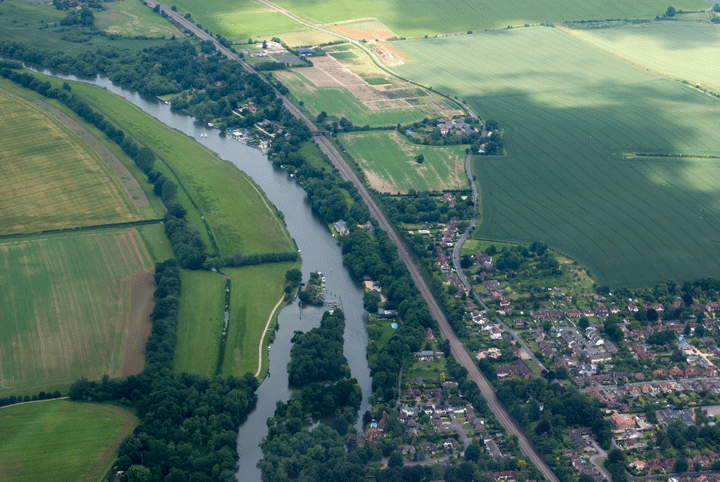
|
|---|---|
We descend to the 1,000ft circuit height, cross to the Live side and turn Downwind for 20. Now, the question is, can I land this beast on Shoreham's narrow little runway that I used all of getting the Cessna in to?
This time I manage a decent approach, nail it at 80Kt with full flap, flare right on the numbers, touch gently on the centreline and we're down with loads of runway to slow down in, and a "nice landing" from Nessa; praise indeed. Clean up the aircraft, Vacate left and park outside the party hangar, how cool is that?
It's only once we open the door do we realise it's blowing a (crosswind) gale. The saying goes that the larger the aircraft, the easier it is to land, and I'm begining to believe it.
Following an excellent party, we awake the following morning and after a leisurely Full English Breakfast and lots of socialising head for the field, pay landing and parking fees, load our stuff, pre-flight and start-up (no problem now, I know all the tricks).
The Tower can't see us (and can't get our registration right, either...) so ask us to pull forward until we're in their line of sight, then we get a "backtrack 20", zoom up the runway the wrong way and hide in the layby for power-checks. Once complete, we take-off and head for Bembridge for some lunch.
But the weather is looking dodgy over Bembridge; some threatening-looking clouds are coming our way, so over Chichester we decide to make a smart right turn and head back to Oxford. Back to the Midhurst beacon, can't get Shoreham to respond to our goodbye calls, change to Farnborough, make a better job of tracking the beacon outbound but I still can't make VOR1 work and VOR2 is now wandering all over the place (no, really, it's not my flying!), head for Compton, then Didcot which for some reason I can see from 50 miles away. See 2 jets, a glider (above us!) and a PA-28 we overtake with ease.
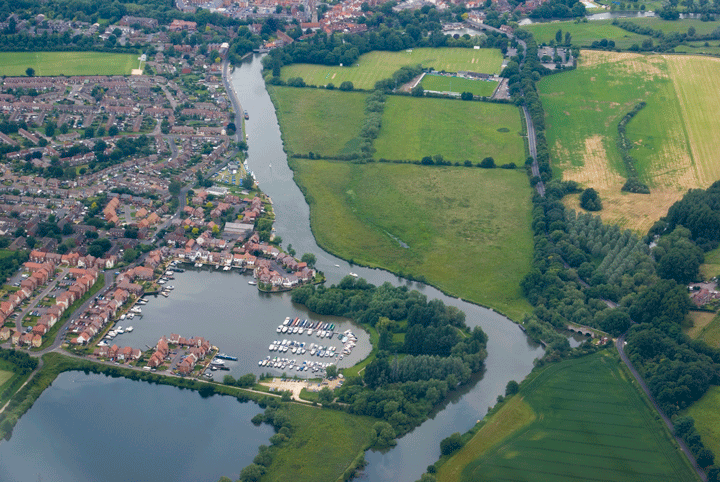
|

|
|---|---|
We change to Oxford Approach, forget to change squawk to 7000 for 20 miles or so (eek!), detour South of Abingdon to photograph the house then let down over the Oxford bypass for a right base join for 01. A bit more confident now, we ease in over the A44 nailed on 80Kts with full flap, flare over the numbers, flick of the stall warner and.... Oh Yes, another greaser. I'm beginning to like Delta Romeo.
Nessa thinks she might fly with me more now I've "learned to land properly"...
Rochester and Old Buckenham 13 Jul 08
Serially awful summer weather conditions have cancelled our Jersey trip twice more (we're beginning to get paranoid about this....). Nessa is away for the weekend and the girls are happy to be left alone to potter at home, so Stephen, Chris and I meet up to plan a sunny Sunday out in the PA-32. Joined by Wayne and Stephen's other half Karen, we pore over maps to find a suitable triangular route that gives each of us a leg to fly, a leg in the right-hand seat and a leg in the back; places we haven't been to before and somewhere decent for lunch.
Eventually we decide on Oxford-Lydd-Old Buckenham (Norfolk)-Oxford and plan the legs. I am to do the most radio-intense bit, around North and East London and down to Lydd. The last time I made this journey was in the C172 going to Le Touquet and it took a while.
We taxy out, fill up and take-off. Despite the very heavy load we're accelerating OK until I misread the ASI by 10Kts and pull it off the ground too early, resulting in a squeal from the stall warner, but with nose forward we accelerate in ground effect to 80Kt and climb out.
We'll fly at 2,300ft below the London TMA, which makes us susceptible to turbulence, especially over the Chilterns. I am determined to make a better job of tracking the various VORs than I made last time, especially as this is a quicker aircraft. This I manage, and despite a requested detour from Farnborough Radar away from the Stapleford overhead and a huge amount of radio and intercom traffic we rocket around North and East London a lot faster than the C172. I doubt I will ever be really happy now owning anything that cruises slower than 130Kts.
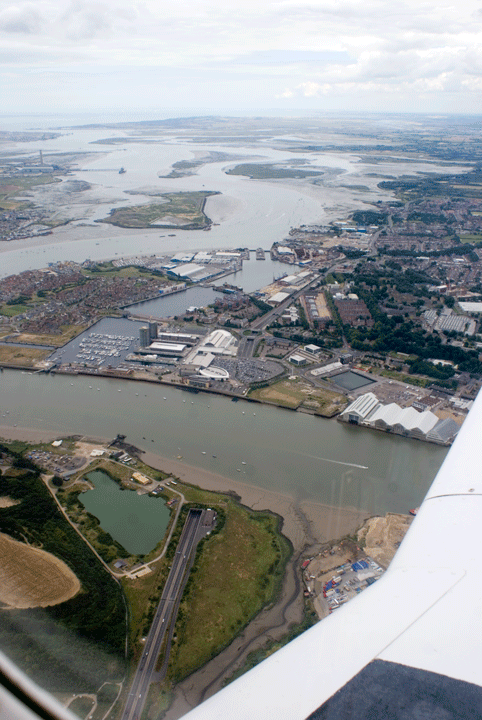
Before we know it we are over the Thames and then the Medway heading South East over Rochester, which has always struck me as looking like a nice little airfield to drop in to.
Heading South to Lydd, we hail them on the radio, only to be told that they have an incident on the runway and we will be delayed for 10 minutes. Well, we're 10 minutes away so that's not an issue, but 5 minutes later they advise us that the delay will now be 40 minutes and aks for our intentions.
"Unknown" is the obvious response, but a diversion is probably the best option. Whilst I orbit, the guys decide on Rochester, we work out a heading and return North.
Rochester can't hear us until we are virtually on top of them, then advise a delay as they have an incident on their runway as well.
They advise a crosswind join, a circuit and a go around if necessary. Descend, slow down, join crosswind, deploy a stage of flap, trim for 100Kts and extend downwind for a couple of miles to give them some time to clear the runway.
This is a tricky approach: it's a relatively short grass runway with buildings on the approach and at the other end of the runway; we are heavy and there is no wind so we will be relatively fast. By the time we are on short Final they are still towing the aircraft away, so we go around (a useful practise approach), but a circuit later the runway is clear, so full flap, 80Kts, precision approach and.... flare, hold it, touch, bounce a little on the grass, then the aircraft settles, we dump the flaps and progressive braking stops us with plenty of room to spare.
Exit right to the bumpy taxiway, weaving a little as this aircraft sits in a very nose up attitude on the ground. I don't usually bounce my landings, but the reason becomes apparent when I see the runway from ground level: it's hugely undulating, so I feel a bit better, but of course you're only ever as good as your last landing!
We have lunch surrounded by bits of genuine WW2 Luftwaffe uniform, and maps of where German V-1s landed in Kent. Rochester is friendly and relaxed, with hangars full of interesting aircraft. Worth more exploration.
After lunch Stephen takes off from a different runway: the heavily laden aircraft takes ages to reach flying speed on the grass, and the initial climb out is above a steeply climbing wooded ridge.
Not a good place for an engine failure on climb-out.

The weather deteriorates and the sun disappears as we head North over Southend and towards assorted USAF MATZ's.
Wattisham is closed but we make blind calls as we pass overhead, then change to Old Buckenham and the chattiest radio operator I've ever heard comes on, giving advice and anecdotes with his messages.
We approach from the West over Snetterton racetrack (looking busy) as there is gliding further East, and Stephen drops it firmly on to the tarmac without bothering the earthmovers and rubble piles beyond the prominently placed "End of Runway" sign.
Not a place to overrun.
The first aircraft we hear approaching the airfield prefaces his initial transmission with "Old Buck! Old Buck!".
Clearly they do things differently in Norfolk: a far cry from Oxford's clipped CAP413-compliant transmissions.
 Old Buckenham is a tiny ex-WW2 base now used mainly for parachuting, with an immaculate new cafeteria and, amazingly for such a small airfield, an immaculate turbine Piper Malibu parked behind the hangar.
Old Buckenham is a tiny ex-WW2 base now used mainly for parachuting, with an immaculate new cafeteria and, amazingly for such a small airfield, an immaculate turbine Piper Malibu parked behind the hangar.
We watch the parachutists clamber aboard a new Cessna Caravan which then takes off with an almost complete absence of noise and a few minutes later, as we wait for permission to start, they return to earth in ones and twos.
I can understand why they mandate no overhead joins and no engine starts without permission. A whirling prop in the wrong place would make an unforgiving landing spot for a parachutist.
After tea Chris whips the PA-32 off the runway whilst I sit in the back. It's really comfortable back here and great for taking photos as they negotiate with rapid-fire USAF controllers for a MATZ transit through the Lakenheath/Mildenhall area.
Before long we are overhead Cambridge, then Cranfield, Milton Keynes and finally home to Oxford. Interestingly, Chris does exactly what I do in the PA-32, which is to land it to the left of the centre-line.
And that's the last time I fly without the comforting safety blanket of an Instrument Rating ensuring I will get to where I'm going and home again if the weather turns yucky.